






With its unmatched short and rough field landing capabilities, along with a huge cargo door, Proven has been redefined – introducing the brand-new PC-12 PRO.
Pilatus Centre SA
Authorised Sales Centre




50.
10. Guy Leitch
16. Peter Garrison
22. Jim Davis Plain Talk
30. hugh Pryor

50. Jim Davis Accident Report
68. Morne Booij-Liewes Register Review
36 Attitude for Altitude Leading Edge
16


For 120 years, our engines have helped shape this industry, with landmark innovations that put pilots first. The first Jet-A engine for GA, FADEC, fuel injection, turbocharging—advancements in performance and quality. Together with you, we celebrate aviation’s pioneers, and our shared journey toward the future of flight.
Continental ®: Powering Legacies Forward.
THE only explanation for Trump’s trade wars and punitive tariffs that makes sense is that Trump is trying to crash the bond market, so that the US government can refinance its trillions of dollars of borrowings at a lower interest rate. But it is causing immense damage. The fallout in the aerospace industry is particularly heavy. Delta airlines has indefi-
For Sling, the start of the tariffs means that any components that they have not already shipped to the United States are subject to the 30% tariff. This then adds about $60,000 to the price of a basic $200,000 aircraft, as there are very few American components in Slings. This is a huge problem as between 60 to 70% of Sling sales are now in the USA. Notably too, there are almost no US manufactured components in the Sling, not even the Garmin G3X avionics, as they are made in Taiwan.
nitely delayed its order for 20 A350s. CEO Ed Bastian said, “We are very clear that we won’t be paying tariffs on any aircraft deliveries we take.”
To try grasp the economic damage of these tariffs in South Africa, I spoke to Sling Aircraft’s James Pitman. One of the key problems is that there was no gradual introduction of the tariffs. They descended like a guillotine and cut off sales for many businesses. (This is presumably one of the reasons that Trump has agreed to a
Given that buying a recreational light sport aircraft is not an essential in times of economic downturn, many buyers will simply cancel their orders.
One of the few ways to reduce the burden of the tariffs on would be to use Lycoming or Continental engines.
However Pitman said that this is just not feasible given how the entire aircraft has been designed around the Rotax 900 series engines. Another alternative would be to source the aluminium from American suppliers, but that would add significant costs in shipping the metal from, and then back to, the USA.
The impact of the tariffs on Sling sales is therefore going to be huge, and if the company is to survive, it will probably have to lay off staff. Pitman says that this is significantly more serious than Covid was.
I pointed out that the American aero-
space industry is huge and that other non-American OEMs have plants which assemble their aircraft in the United States, for example, Airbus in Alabama and Embraer in Florida. The pushback from these manufacturers will hopefully lead to industry-wide concessions. The problem is that many pending Sling buyers are already expecting this and thus delaying buying decisions. We can only hope that ultimately sanity will prevail and that great little manufacturers like Sling Aircraft will not become collateral damage.
SALES MANAGER
Kerry Matthysen sales@saflyermag.co.za 082 572 9473
TRAFFIC
Kerry Matthysen traffic.admin@saflyermag.co.za
ACCOUNTS
Bella Leitch bella@taxfinaccounting.co.za
EDITOR
Guy Leitch guy@saflyermag.co.za
PUBLISHER
Guy Leitch guy@saflyermag.co.za

PRODUCTION & LAYOUT
Emily-Jane Kinnear design@saflyermag.co.za
CONTRIBUTORS
Jim Davis
Peter Garrison
Hugh Pryor
John Bassi
Morne Booij-Liewes
Laura McDermid
Darren Olivier
Jeffrey Kempston
ILLUSTRATIONS
Darren Edward O'Neil
Joe Pieterse
WEB MASTER
Emily-Jane Kinnear

© SA FLYER 2025. All rights reserved worldwide. No part of this publication may be reproduced, stored in a retrieval system, or transmitted by any means, electronically, mechanically, photocopied, recorded or otherwise without the express permission of the copyright holders.
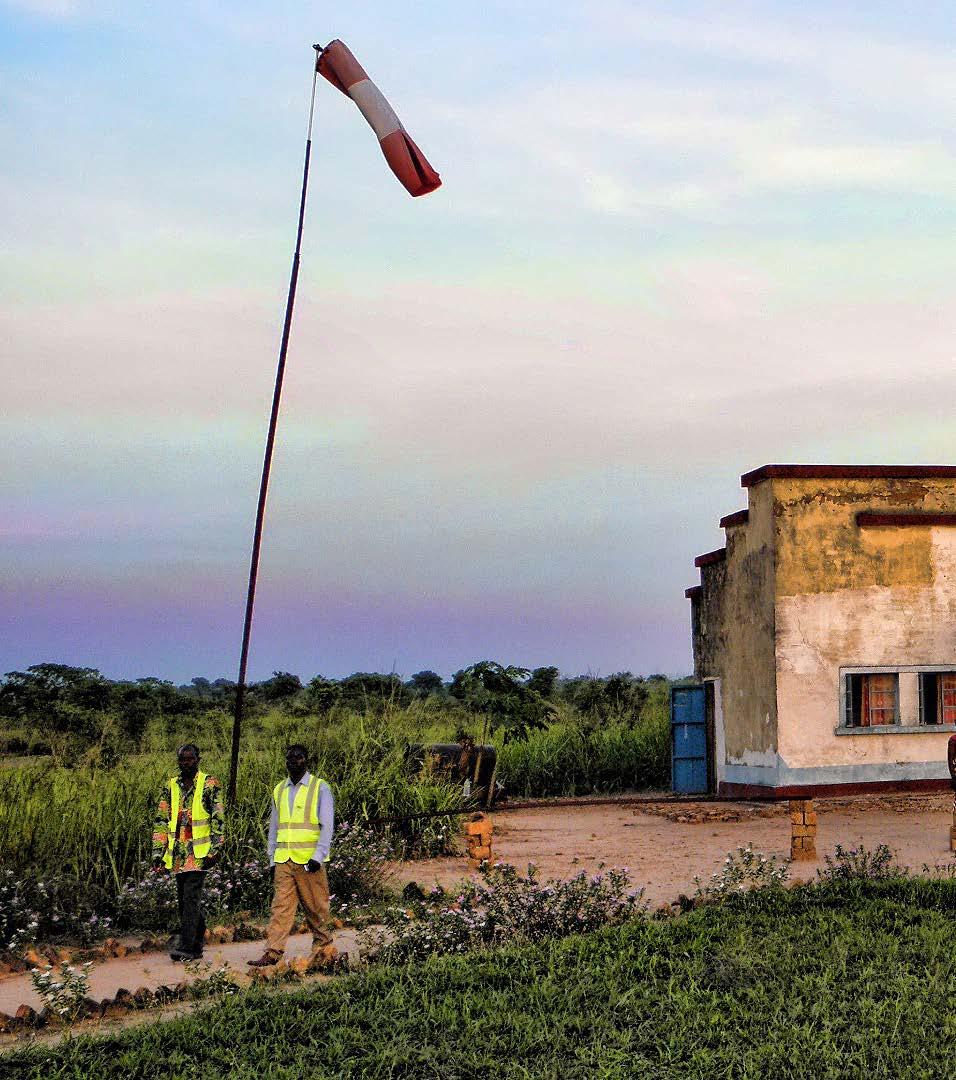

Richard Maier has travelled all across Southern Africa as a charter pilot and has produced some wonderful contributions to the Opening Shot series.
He took this great pic of the run-down terminal building of Kabalo Airport in the eastern DRC with his Olympus SP600 bridge camera with a lens of just 7.9 mm. Exposure was f3.9 @ 1/60 second. But it’s not those details that matter – it’s the wonderful sense of time and place that the image captures that makes it special.

THE PILOT SHORTAGE WILL HASTEN THE MOVE, WHICH MANY SEE AS INEVITABLE, TO SINGLE PILOT COCKPITS. AND HERE’S A THOUGHT - SINGLE PILOT FLIGHTDECKS ARE MUCH THE SAME AS NO-PILOT FLIGHTDECKS.


TO deal with the shortage, airlines are making profound changes to pilot employment contracts. In South Africa, including increases in recruitment age – in some cases to 67. In the USA the much-protected minimum requirement of a 1,500 hr ATPL to get into the right seat has quietly been dropped.
Also in South Africa, we are seeing massive recruitment drives to suck up South African pilots for the world’s airlines. Many are finding the attractions of a functional government, a safe environment for their families, and large, sometimes tax-free, dollar-based salaries, very attractive.
But pilot recruitment strategies that poach from other airlines, or extend retirement
age, or reduce entry requirements, are still not enough to meet the shortfall caused by the loss of up to 40% of the pilots due to Covid, retirements and cutbacks by the airlines.
At the same time there has been an exponential rise in Artificial Intelligence systems. And so there has been increasing noise about a move to single pilot cockpits. The idea that technology has advanced far enough to make pilots redundant fascinates the general flying public, not to mention all the professional pilots who may one day lose their jobs to a computer.
Basic automation has been making the skilful parts of flying an airliner easy. Autoland has already been around for fifty years, and it is reported that pilots spend on average just six minutes hand-flying the plane on each flight. And now satellite communication (think

What happens if the only pilot needs to go to the toilet?
Starlink) will make it possible for someone on the ground to step in and take control of an airliner if the ‘fleshware’ pilots are incapacitated.
It’s claimed that the Airbus A350F was designed with single pilot operation in mind. This will not come as surprise to pilots used to the overarching role of computers keeping pilots from doing stupid things – in contravention of the Airbus “Flight Laws’.
In the endless Boeing vs Airbus debate, ‘real pilots’ prefer Boeings with their direct controls, while the ‘accountants’ prefer the Airbi that use computers to keep the pilots in line. An SAA captain who moved from flying Boeings to Airbus said, “I took my screwdriver and disassembled the Airbus’s side stick - and wasn’t surprised to find that it isn’t connected to anything at all; no wires, no cables, no nothing!”
He was of course only joking, but it’s important to understand that Airbus is designed around the automation system - and not the other way around. This makes the pilot increasingly redundant. So the bean counters are increasingly calling for singe pilot cockpits. The concept of a single pilot airliner is at least forty years old. In the 1980s Boeing showed a single pilot flight
deck 737 mock up. The first and most obvious objection then, as now, is what happens if the only pilot gets sick? Boeing calculated that for flights up to four hours, the statistics on crew incapacitation were well within the 10 to the -6 limit required. But the incidence of pilot incapacitation cannot be ignored and, as we have seen, pilots are getting older.
Airline pilots and their all-powerful unions heap scorn on the idea. They point out that all airline pilots would have to be rated as commanders, and ask how they would achieve that competency without first being co-pilots? And, if there’s no copilot, who would do the paperwork?
Another concern is that autopilots have to have an override mode to trip them out. An un-disengage-able autopilot is the thing of nightmares and B movies as it power dives the aircraft to its doom. (Think Boeing MCAS) . But if the single pilot has to go to the toilet, he must know that George (or Otto Pilot) is not going to trip out if it encounters a sudden gust or gets conflicting information from a frozen pitot. Systems such as Garmin’s Autoland can already land single engine planes and the
rise of AI cannot be underestimated for flying an aircraft with pilot incapacitation. One of the enduring problems with single pilot ops is who keeps the pilot awake on long hauls? There have been numerous incidences of both pilots having fallen asleep and missing reporting points, and even the top of descent. In the days of DC-8s, KLM pilots had an egg timer in the overhead to wake them up. Today, if nothing has been touched for twenty minutes, Boeings put up an EICAS message that reads; ‘Pilot Initiated Event required’. If there’s no response, the caution alert sounds. After another minute, if still nothing has been done, the Master Warning screams.
What about bodily functions? Some scatological wag suggested that pilots should not have to actually get up to go to the toilet. Since she is alone in the cockpit, it should be possible to make a pilot’s

seat that, with a flick of a switch becomes a toilet so she can go there and then. This would probably suit women better, as no real male pilot would sit to pee.
A key requirement for single pilot ops is satellite-based communication with aircraft and this is now available, cheaply and easily through Starlink. If only we had it in South Africa.
The military is far ahead and uses satellite comms to fly UAVs on the other side of the world. So it’s entirely reasonable for an airliner to have just one pilot. When she needs to go to the toilet, or have a rest then, like a UAV, the flight can be managed from the ground. Instead of having a second pilot costing millions a year, the flight could be monitored by a cheaply trained flightsim enthusiast in Mumbai, earning R200,000 per year – and looking after many flights at once.
Single pilot ops with a backup on the ground will require huge regulatory changes, as well as new technology for the ‘ground pilot.’ This would open the doors to fears that the systems used by the ground pilot to fly the plane remotely could be vulnerable to cyberattacks to remotely hijack a plane. So they wont even need suicide bombers.
Perhaps the real problem holding back pilotless
airliners is that the passengers would not be happy. But it’s not unreasonable to expect that they could soon get used to it. We have learned to accept driverless trains, and it wasn’t so long ago that skyscraper lifts had operators. The aircraft hardware and software has built in redundancy, but could it ever be okay if the ‘wetware’ (the human brain, which is the weakest link) – has no backup? There has to be redundancy, so to have single pilot operations there will have to be aircraft that can fly with no pilots at all. Ipso Facto - Pilotless planes. This redundancy can come from the explosive arrival of Artificial Intelligence. Sir Tim Clark, the head of Emirates, says, “Artificial intelligence will likely be along for the ride in every flight deck.” Clark has said that he doubts passengers will accept a pilotless flight deck. “You might see a one-pilot aircraft, but they will be a long time coming.”
Can an airliner be flown on a fully automated basis? Clark said, “Yes, the technology is right up there now, but in my view, there will always be somebody on the flight deck.”
The idea that passengers may be so committed to cheap tickets that they would accept just one pilot may be fallacious. Using round numbers, assume a Second Officer has a cost to company of R2 million and flies 50 long-haul sectors per year, that is R40,000 per sector. If that is distributed amongst 300 passengers, that is R133 per ticket. On a fare that could easily cost R10,000, this is barely 1%. I reckon that given a choice between one or two pilot airlines, passengers will be happy to pay R150 for the comfort of a second pilot. Same as we are happy to pay petrol pump attendants.
In the final analysis it’s worth remembering that, no matter how smart AI gets, human experience and judgement, and the subjective skills of CRM, all add up to the aphorism that pilots are not paid for what they do: they get paid for what they can do when the electronic brains get confused.
So, I don’t see single pilot ops, and its natural conclusion, pilotless planes, happening any time soon.
j








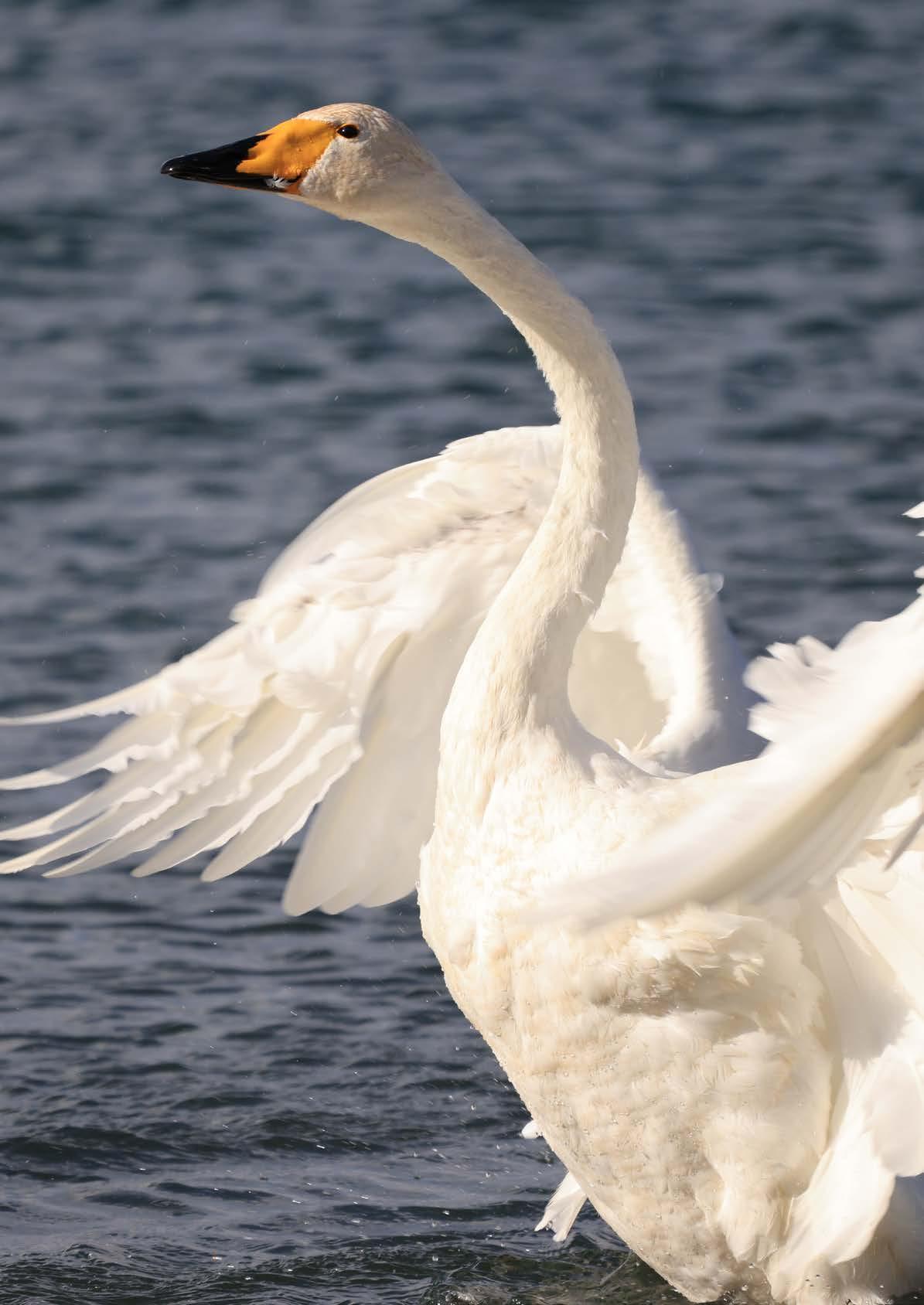
It’s a Plane! It’s a Bird!


EVERY afternoon my partner Nancy and I walk around Echo Park Lake. Two miles from downtown Los Angeles, Echo Park Lake is not Walden Pond. It is man-made, cement lined, shallow, and ringed by a paved walk on which multicoloured streams of people, old and young, some strolling, some rolling, flow in at least two directions, maybe more. On the other hand, its banks are grassy and tree-shaded, and at its northern end is a picturesque island densely forested with tall palms.
A few years ago the lake, which contained a huge bed of lotus plants, was drained, revealing a deep layer of muck. For some time, Asian women slogged thigh-deep in it hunting for lotus roots, a culinary delicacy. The lotophagous ladies were followed by tractors and trucks that scraped up the fertile muck and hauled it off. The lake then sat, an empty eyesore, for a long time while the city hatched an ambitious plan for converting it into an urban wetland. Unlike most efforts to make silk purses out of sows’ ears, this one worked.

ABOVE: Trying to fly by emulating birds is a bad idea. SA FLYER MAGAZINE -MAY 2025
Now small white and large blue herons stalk in dense flowery reed-beds, while patient green ones hunch on stumps awaiting prey. Leafy-footed, quarrelsome coots swarm as dense as fleas; ducks of a dozen varieties fly and float and dive; Canada geese, having lost their migratory fervour and become as sedentary as humans, multiply and defecate; cormorants encumber tree branches like sinister black fruits; even a few ochre-eyed Egyptian geese strut about, ambulatory hieroglyphs. Surrounded by this treasury of waterfowl, I reflect
on how they must have fascinated the would-be aviators of pre-Wright times, and what lessons, both true and false, could be extracted from them. I think bodies of water, and their shores, must have drawn aeronautical dreamers and experimenters, because waterfowl tend to be on the large side, as birds go, and therefore closer than finches or hummingbirds to an aspirational flying human.
It is intuitively obvious that you can learn more about the possibilities of human flight from a goose than from a lark – though if it were music you were interested in, you would be better off with the lark.
But it’s hard to put yourself back into the place of people who asked the question, but had not yet learned the answer. How do you sweep aside all that you know, and confront a bird with the bemused stare of the would-be aeronaut of pre-aeronautical times?
There were many misleading things about birds. One was that they flapped their wings. Many an experimenter struggled with the mechanics of flapping, without apparently stopping to wonder how the vestigial pectoral muscles of a man could possibly flap wings large enough to hold him up. Did it take a leap of insight – it cannot have escaped the prodigious da Vinci – to see that many birds remained aloft with motionless wings, and that the essential thing about flight was not flapping, but forward motion?
Even landing, which seemed to involve the most violent flapping, was achieved by waterfowl with a minimum of wing-work; they came in fast, like jet fighters, often in formations of two, and skated to a stop along the water’s surface on their broad webbed feet.
tended to have long, narrow wings. Ducks and geese had short, pointy ones, while the wings of hawks and buzzards were broad and rounded at the tips. Why?
Geese certainly travelled farther than seagulls did, so it couldn’t have anything to do with how hard they had to work to fly. Butterflies were practically square. Which was better, and why? Did feathers matter? Perhaps not; bats and bees got along without them. What was the role of the tail feathers? What if you plucked them? Could the bird still fly? And if tail feathers played some important stabilising or manoeuvring role, why did grackles – glossy black birds with a squealing cry – twist their tails around in flight to make them vertical, like the rudders of boats?
Different birds had different flight patterns. Some, like crows, flapped their wings slowly but almost all the time. Some alternated flapping and gliding. Some, like herons and pelicans, could execute seemingly endless horizontal glides just above the water’s surface without moving a muscle. And the size of wings, relative to body weight, was all over the map. A bird might have a wing loading of four pounds per square foot, or four ounces. Was it accidental? Was it related to the environment or the foraging behaviour of the bird? Or had birds learned to forage in different ways, and live in different environments, because they were built in random different ways?
Birds were reluctant to provide guidance about overall configuration. Seabirds
Today we can answer all those questions and more – well, maybe not the one about the grackle – but in earlier times they must have seemed to be impenetrable riddles.
Considering the enormous importance of flight in our world, and the sophistication of the technical means used to achieve it, it’s odd that very little genuinely scientific research went into it until after human flight had been achieved.
Other much less useful subjects, like the distance from the earth to the sun, had commanded the attention of far more great minds, and had been studied more systematically, and with more delicate instrumentation and with deeper mathematics, than flight had.
There was such a thing as theoretical
aerodynamics long before there was such a thing as an aeroplane – our old pal Bernoulli died in 1782 – but somehow the link between it and practical flight was never forged.
Although we have mastered flight, we still look enviously at birds. No aeroplane can emulate the athleticism of a falcon (though a few might approach the silliness of the coot). Aeroplanes are beginning to develop some bird-like abilities, thanks to
by Peter Garrison
relaxed stability and digital control systems, but they are still stiff, lifeless things compared with birds.
Would-be imitators of birds ignored the most essential thing about them – that they were guided by a living intelligence that spoke to every fibre of their bodies. Without that, no ornithopter, however similar to a bird it looked, would ever approach a bird’s agility and grace.
People like to joke that if God had wanted us to fly He would have given us wings. Actually, he clearly did not want us to fly, or He would not have sent birds to confuse us.
j







HOWEVER , I regret that I must now issue one.
DON’T YOU HATE DISCLAIMERS?
THOSE NOTES, IN SEVEN LANGUAGES, THAT SAY, “WARNING. SERVICING THIS DEVICE IN THE BATH MAY LEAD TO INJURY OR DEATH.” THE WORD DEVICE COVERS ANYTHING FROM AN ELECTRIC LAWN-MOWER TO A VIBRATOR.
Low flying can be dangerous. Whatever I say about it may be out of date or incorrect. So when you are charged with killing five church-goers or frightening a herd of turkeys, it’s no use crying to mommy, or to the beak, and saying, “But Jim said it was okay…”
DEFINITION: Low flying is flying lower than 500ft agl.
The regulations in most countries say that low flying must not cause a nuisance or danger to persons or property on the surface. So if anyone complains, then you have been a nuisance, you have contravened the regulations. You can be fined, have your licence put through CAA’s confetti machine, be chucked in the slammer, or all three.
Then there’s a whole lot more stuff about minimum heights over congregations, towns, military places and game-
reserves. You need to look them up and avoid them.
Oh, and there’s one more that’s not in the regs but should be in your head. Lakes, bodies of water and rubbish dumps harbour birds – so don’t be silly.
Actually rivers are seriously dangerous as they are the homes of:
• Birds
• Valleys
• Overhead wires
• Cable cars
• Foefie slides
• Resorts full of admirers you can wave to as you sail into the cables.
In South Africa low flying is part of the PPL course but it’s dual only. Solo low flying is prohibited. I’ll tell you a story about that shortly.
Everyone gets taught low flying as part of their PPL. I think this has merit because it says, we know you are going to do it (le-
gally or otherwise) so here are the tools to do it safely. This part has led to a number of accidents –mostly youngsters showing off and flying into the rising or setting sun and slamming into powerlines.
In Australia you don’t get low flying training as part of your PPL, and you are not allowed to do it. However, in 2019, CASA introduced a low-level operational rating – separate from ag and mustering
There are three main reasons for low flying:
• Because you want to – sightseeing, gamespotting, mustering, photography, powerline or pipeline inspections, and so on.
• Because you have to – normally because of bad weather, low cloud and poor visibility.

ABOVE:
The lure of low flying has led to some spectacular escapades.
endorsements. It’s to train pilots for powerline inspections, gas pipe inspections and the like. Previously there was no specific endorsement for this and therefore no requirement to demonstrate competency. You needed permission from CASA and that was about it.
• Tactical/military flying. Under this heading a slightly lower priority is placed on safety. Joe’s magnificent painting shows the sort of flying your country encourages you to do in times of strife.
Airshows

You use different techniques for each of these.
If you are low flying just because you feel like it, then you need to maintain at least normal cruise speed. This gives you good manoeuvrability for clearing wires that may suddenly appear, or rising ground that can take you by surprise.
Always cross ridges of high ground at an angle so you can turn away if necessary.
If you have been forced down by bad weather and the visibility is poor, then fast is not good. You don’t want obstacles appearing out of the murk too quickly. It’s best to use your normal climb speed and set your flaps to the take-off position. This gives you a decent view over the nose, reasonable manoeuvrability and a better chance of seeing what you are going to hit.
There was a case a while ago when a C210 going coastwise from East London to Durban had to get down to 50’ along the beach to stay below the cloud. Even then the viz was poor. He thought it was fine to bat along at 180 mph – no wires and no rising ground. I guess he hadn’t given much thought to seagulls or kite fishermen – but they were not the cause of his downfall. The coast curved round to the right
then suddenly came to a headland where it ducked abruptly back to the left. The aircraft was going too fast to follow it round, so the pilot suddenly found himself out of sight of the coast. The immediate danger is that it’s almost impossible to judge your height over open water. You have no identifiable size reference to tell you whether the waves are ripples of monsters.
However, even this didn’t catch him out. He turned sharply left to look for the coastline and flew slap into a cliff – killing all four occupants instantly. Had he chucked out some flap and reduced speed to 100 mph to allow for the poor viz he would have been in a far better position to follow the coast. Also that would have vastly reduced any bird damage if he had smacked a 4 lb seagull.
Here’s a checklist of 27 items you need to brief your pupe on before you go low flying:
• The legal implications.
• The choice of a good area.
• Position of the sun.
• Wind strength and direction.
• Density altitude.
• Passenger briefing.
• Fuel selection and pump.
• Trim.
• Possible conditions for carb icing.
• Power and mixture settings.
• Engine cooling.
• Poor VHF range.
• Location of birds (lakes, rubbish dumps etc).
• Avoidance of birds.
• Rising ground.
• Loose articles.
• Harnesses.
• The dangers of wires.
• The dangers of valleys.
• The dangers of open water.
• The dangers of large expanses of sand.
• Airspeed/groundspeed relationship.
• Apparent skid and slip in turns.
• Keeping your hand on the throttle.
• Maintaining a constant lookout, particularly ahead.
• Distractions – inside and outside the cockpit.
• Low-level navigation.
After you have gone through these safety precautions and chosen a good area, your instructor will take you down to a low safe height and point out what she is doing.
She will keep one hand on the stick and the other on the throttle all the time. If she needs to change tanks, change frequency or do anything else, she will climb to 500ft before taking her hand off the throttle or dealing with the distraction or talking on the radio.
She will have the trim set nose-up so that she must positively hold the aircraft down. She will only look ahead and will not be tempted to join in the sightseeing that the passengers may be doing.
A major part of your low flying training will cover the effects and illusions of wind at low altitude. She will start off by flying into wind at cruise speed – say 120 mph on the ASI. If there is a 20 mph wind this will give you a groundspeed of 100 mph. You soon get used to the speed that the ground is going past, and you can feel that the controls are firm and effective.
it’s andsafe, it’s a hell of a lot of fun
Next, she will do a 180° turn, say to the left. During the turn the wind will carry you to the left and you will feel as if you are slipping into the turn. You will be tempted to try and correct this by using a boot-full of left rudder. Don’t do it. A quick glance at the ball will tell you that all is well (give or take half a ball) – and there is far more important stuff to attend to.
When you roll out of the turn you will be flying downwind. You will still have 120 mph on your ASI but the ground will be rushing past at 140 mph.
Remember that on the into-wind leg you got used to a groundspeed of 100 mph. So
A famous low flying incident that the pilot later described as illegal and stupid.
suddenly going 40% faster is going to seem all wrong. You will tend to throttle back and reduce airspeed until the ground is going by at a familiar 100 mph. But when you do this you will have a soggy and dangerous airspeed of only 80 mph. So don’t be tempted to reduce power when you go downwind – no matter what it feels like.
Now you are going to do another 180° turn to the left to complete the racecourse pattern. In this turn you will seem to be skidding and will again be tempted to play with the rudder. Don’t do it.
Keep your eyes outside. The power setting will look after your airspeed, and the ball will look after itself.
I called my mate Larry Beamish to say I am writing an article on Low Flying. There was a long silence, then a massive

walked (actually staggered) away.
Larry, a hugely experienced and well-respected pilot, was exceedingly lucky. He only committed two of a whole bunch of possible crimes. I’ll tell you about them in a moment, but Larry’s first mistake was to do an impromptu beat up. Doing anything unplanned near the ground has the potential for disaster.
Larry had just completed a routine for the crowd at a model aircraft gathering. There was a delay before the next act so he decided to do a ‘filler’ to keep the folks amused. Think of ‘filler’ as ‘killer’, and you have got it in one. Airshow fillers have a deadly reputation – because they are often spur of the moment deals.
Anyhow, Larry had been
imagined the airfield was a real one - not a model aircraft sized one that looked real. So he assumed there would be no power lines on the approach to the runway. And that’s where mistake number two crept in. There were power lines - he had fallen into that terrible trap of assuming.
There’s also an illusion of being high when you look at quarter sized runways.
The SACAA used to have an objectionable little testing officer who was always waving his finger at people and saying, “To assume makes an ASS of U and ME”. I wanted to strangle him, but he was quite right. I assumed you checked the fuel, I assumed you brought a map, I assumed you got hold of the met.
Okay, I assume you’ve got the picture by now.
Despite the number of low flying accidents, it’s legal, it’s safe, and it’s a hell of a lot of fun – as long as you stick to the rules and do it intelligently.
Wires are the main problem - either you don’t see them at all, or you see them too late.

ABOVE: The remains of the Cherokee after it was flown into powerlines.
On my first encounter with wires, I am flying O for Orange, a Mark III Lancaster in Guy Gibson’s 617, Dam Busters, Squadron. I swoop down to 60ft so that the two spotlight beams combine to form a circle on the water. I aim for the centre of the Möhne dam wall. Tracers from the towers stream directly at me and skim just past the cockpit. The aircraft rocks in the night sky as bursts of flak get dangerously close.
Actually that’s not quite true. My mount is Bravo November Romeo, the Pretoria Flying Club’s J3 Cub. And I am maybe 10ft above the waters of the Bronkhorstspruit dam. At the last second I pull up and rocket over the wall at nearly 65mph. What a man.
I have 32hrs in my logbook and I am invincible. When I tell my buddy about it he wants to know whether I went under or
over the wires that run from one tower to the other. ‘Wires?’ I say, ‘What wires?’
As I mentioned, Dual Only means no Dam Busters stuff even if
You are Guy Gibson.
You think you are Guy Gibson.
You want others to think you are Guy Gibson.
You may think all this talk of flying into things is a bit unlikely – hell you can see what’s in front of you so why fly into it?
Let me tell you about three low flying accidents that spring to mind.
A foreign, 21 year old, Com student who had just got his PPL at Heidelberg, loaded two of his fellow students into the aircraft.
A farmer said he watched the aircraft doing low flying over his fields. However one of the passengers said they were
practicing forced landings into the setting sun. No matter, the aircraft hit high tension wires 20’ above the field. It then smacked into the ground, nose-down 50 metres further on.
All on board suffered serious injuries and the pilot was sent to hospital in Egypt with critical head injuries.
A pilot who had just earned his PPL took off from George late one afternoon. 20 minutes later ATC received a call to say the aircraft had crashed in the Mossel Bay area.
Same again he flew into high tension wires with the sun in his eyes.
He was uninjured but the aircraft, which used to belong to me, now rests in a kiddies’ playground in Oudtshoorn.
The aircraft took off from 43 Air School Port Alfred late one afternoon with three foreign, hourbuilding pilots on board. They returned to Port Alfred sometime later with the most extraordinary problem. They had been playing silly-buggers over the sand-dunes and somehow managed to wipe the nosewheel off the aircraft without touching the main wheels. Unbelievable – but it happened.
Sand-dunes are as dangerous as waves in the sea. You have nothing with which to judge their height. Never underestimate them – I very nearly sailed into one on the approach to Walvis Bay.
I have trained a hell of a lot of students and not one has ever had a low flying accident. My secret is that I make the low flying exercise into the most unpleasant flight of their lives.
I like plenty of wind, plenty of turbulence and the sun low.
I then pretend to spot something interesting out of the left window. If he even glances that way I shout at him to keep his eyes ahead.
You can make it even more unpleasant if it’s a hot day and you keep the ventilation closed so that the sweat runs down his face and he can’t wipe if

ABOVE: There are many hidden dangers to low flying. j
It’s good to have the aircraft trimmed a bit noseup for low flying, but I insist on making it uncomfortably so. This means that the student is physically battling to keep the aircraft low, and I am pushing him to get lower into the region of stronger turbulence.
off because he has to have his hands on the stick and the throttle. Very soon the pupe is begging to end the exercise and climb back to a sensible height.
I hate doing this, but it works. The pupe leaves knowing that low flying is not for him.

I’ve heard of people landing in the wrong place, for sure. I’ve heard of people using the wrong runway for take off and landing, too, sometimes with horrific and tragic results. In fact, I am ashamed to admit it, but I’ve actually done that myself.
HOWEVER , in order to land at the right place and then, unintentionally, to taxi to the wrong place. Well, let’s just say that there are certain…er…‘special’ circumstances which must prevail before it is possible to do that sort of thing. I am not, you may be surprised to hear, ashamed, to admit that I have been there and done that.
The circumstances were rather unusual.
It was during the great storms of the El Niño weather phenomenon, so the flood plains of the Juba River in Somalia were doing their job. In fact, the width of the river had grown from its normal thirty metres, to a staggering seventy-five kilometres in just two days. .
You couldn’t see from one side of the river to the other. Many houses were completely submerged beneath the water, and the sea and the river became one where the coastline had once been. Fresh water became sea water where the brown silt slick stopped, about ten miles offshore. The line also marked the destination of

the bloated corpses of domestic animals which swirled in an obscene dance of death with the swollen earthly remains of their previous owners. Around two thousand people were swept away and disappeared (as did most of the airstrips) when the deluge came crashing down from the Ethiopian Highlands.
A big influence on the success of any relief operation in that part of the world during the floods was the fact that bureaucracy was in its infancy in Somalia in
1997 and, as I’m sure you are well aware, bureaucracy needs large quantities of dry paper, working writing implements and people who have at least a vestigial knowledge of how to use them.
Believe it or not, the Somali language had never been written down until the end of the nineteen seventies. The Somali alphabet did not exist as such. They had to make do with the Latin one. Dry paper,
too, was about as common as slugs’ legs during the El Niño floods, so bureaucracy in Somalia had to feed off imported bureaucrats.
For these reasons, the seeds of bureaucracy fell on stoney ground in Somalia. Governments cannot operate without bureaucrats and a climate thick with small arms fire tends to make them scuttle for cover.
This meant that the Mogadishu Air Traffic Controllers were sitting huddled in an office in Nairobi, which just happened to be three hundred miles away from where you would have expected them to be. Therefore there was really nobody to tell us aeroplane drivers what not to do as we went about our daily work, a situation which has not existed in any ‘civilised’ part of the world since the start of the twentieth century. In other words, we could fly where we liked and land anywhere we wanted, as long as the guys with the guns on the ground agreed, of course.
Pete, a young South African First Officer, and I were flying ‘UN-Tango-1’, a De Havilland Twin Otter, for the World Food Program (UNWFP). The aircraft was registered in South Africa and the South African authorities bent over backwards to accommodate us in satisfying the demands of the disaster.
Our first job was to go and hunt for survivors of the floods. When we found some, clinging precariously to the last odd scraps of ground which poked above the muddy tide, we marked them on the GPS and reported their position to the UNWFP, where we were based, for security reasons, at Garissa in Eastern Kenya. Some groups had even taken up residence on the roofs of the houses which still
remained above the flood waters.
Once they had worked out where people were gathering, the WFP got their logistics sorted out. Stockpiles of food, medical equipment and plastic sheeting, for making tents, were assembled and distribution staff were inserted, with boats to transport the supplies to the victims. Our job was to drop all these bits and pieces from the aircraft onto any small open areas which remained dry and accessible to the ground crews. Then these brave people launched off in their boats, unarmed, unescorted and under constant threat of kidnap and even death, into the surrounding lawless domains of the so-called warlords, on their mission to bring relief to the dispossessed. These much needed supplies presented an irresistible target for the drug-crazed local bandits, but, mainly due to the diplomatic skills of the distributers, nobody came to any harm. Two tough young girls, of old Kenya stock, were captured and held hostage. They were part of the team of five food monitors living in indescribable
conditions on the last little bit of Marere Airstrip which remained un-flooded. They were taken by an infamous band of local thugs who demanded a $1,000,000 ransom for their return. Three tense days passed while the girls’ lives hung in
the balance, but such was their reputation amongst the local population that the kidnappers were finally forced to release their prisoners without taking the money. This very unpleasant experience did not discourage the two ladies in the slightest, and they both continued to operate in those very threatening and uncomfortable circumstances until the flood waters receded and the relief operation was completed. After a couple of days of flying low level around the Juba River area, we found some sections of the old Italian colonial roads where, with a bit of concentration, we could set the Twin Otter down without getting our feet wet. The Italian engineers had had the foresight to build the roads, for the most part, above what they conceived to be the highest that the river would come in full flood. They had not, of course, taken El Niño into account. So there were long stretches of road hidden beneath the muddy waters. They had not taken the width of a Twin Otter undercarriage into account either, so all the Italian roads were a standard five metres wide. This gave us about a metre to play with each side between our wheels and the flood waters…and don’t play too much, because if you get it wrong, you’ll be in the swamp, the wrong side of the touch line and there’s going to be an awful lot of paperwork.
The first place we landed on the road was Jamamah. The WFP had set up a rudimentary depot there, to be a central distribution point from where the boats could pick up the relief supplies. After building up our confidence, landing on a regular basis on the road there, Pete and I felt ready to try
our luck on some of the other pieces of road which we had seen snaking up from beneath the bubbling brown tide which continued to surge through to the sea.
The people of Kamsuma had been completely swamped by the roaring floods. Their houses were inundated up to the eaves, their plantations drowned. Another problem they had was that civil war had swept through their neighbourhood and the main road had been damaged by the merciless grinding of tank tracks. This had broken up the surface to the point that the WFP drop co-ordinator doubted whether we could attempt a landing there, so he suggested that we try air drops first of all, until we could ascertain the condition of the road for ourselves.
Our drop technique came direct from experience gained during the Great Ethiopian Famine of 1985-7. During that action, we had worked out that dropping food from ten feet and a hundred and ten knots, made good cinema, but was bad for the bags. They broke up dramatically on impact with the ground. We seldom got away with less than thirty percent of the bags unbroken. The starving locals would scrape up the scattered supplies after we had left, but obviously, if we could keep the bags intact then the victims would be able to eat more food and leave the earth behind to grow the next crops, if the rain came back.
We had a close look at the problem both from the ground and from the air, and it was a very experienced old Dutch pilot called Bill Heutink, flying with us at the time, who was largely responsible for discovering what was going wrong. It was the tearing forward motion which caused the damage. If we could make the bags drop
vertically onto the ground, with no horizontal speed, then we might be able to reduce the breakages.
Firstly we tried dropping from fifty feet at an indicated airspeed of seventy-five knots. Fifty percent of the bags survived. We tried from a hundred and fifty feet at the same speed. Seventy-five percent no breakages. And so we continued until we established that if we dropped from two hundred and fifty feet, we were looking at the magic one hundred percent of the bags getting through to the people who needed them. Breakages became a thing of the past, as did the dramatic cinema with its attendant billowing clouds of flour from the broken bags.
We contacted the Belgian Air Force crews who were also involved in the massive relief effort in Ethiopia. They were operating the C-130, which was, of course, much bigger, but they were suffering from the same problem. They considered themselves lucky to get away with thirty percent no breakages. We let them in on our secret and they set about trying the theory out. Eventually eight hundred feet and a hundred and thirty-five knots produced the business, so we set about disseminating our findings. A certain contingent from another well-known European Air Force preferred to ignore the new dropping technique and to stick with the cinema effects. They went home soon afterwards.



The Beech 1900D has proven itself well -suited to African rough-field operations.
Depending on your perspective, the Beech 1900D may be described either as, ‘A flying Land Cruiser’ or as a ‘King Air on steroids’.
KING AIRS have established an unbeatable reputation for providing, on the one hand, both comfort and speed, and on the other, being tough enough to handle African conditions.
The B200 can get in and out of almost any strip a Cessna 210 can, but it can carry three times the useful load of a C210 in pressurised comfort, 50% further and nearly twice as fast. That is the sort of capability that makes King Airs a popular choice for many corporate flight operations with remote sites.
Although the 1900D looks like a King Air on steroids, and is built on the same type certificate as the B200/ 350 series, it is not officially one of the King Air family. It was designed from the outset as a 19-seat commuter under a special FAA certification. However, it shares many of the design philosophies and components that make the King Airs a standout success.
In size and shape the 1900D’s wing is identical to the King Air 350’s and the overall impression, especially for the older and slimmer 1900C series is one of a stretched King Air. When viewed from the front, a description of the 1900D as a King Air with a roof rack certainly seems appropriate. This is especially so given the variety of aerodynamically functional appurtenances attached to to the tail. For those fans of the King Air’s sleek lines, the weird collection of flying surfaces must give the machine an unexpected futuristic look.
But it is the capability and the flying qualities of a

The 1900D has great power to weight ratio and singleengine performance.
plane that count, especially in the testing environment of the African bush or for short-haul commuter airline work. The net result is a plane that improves on the greatness of the King Air in almost every respect.
The 1900 was designed primarily as a tough commuter, and so the first priority of the designers was to eliminate no-go items that could damage an airline’s on time perfor-

mance. The two key concerns were to eliminate yaw damper failure as a no go item and to keep the loading envelope as big as possible.
To ensure positive stability over the huge C of G range, the 1900D has sprouted even more tail surfaces than the earlier 1900 models. There are now winglets, larger ‘taillets’, stabilons, twin anhedral fins plus a larger dorsal fin and a wider chord rudder. ‘Aeroplanes-as-art’ aesthetes may bemoan the array of Star Wars tails, but all who fly the 1900 cannot but be impressed by its rock solid handling and hugely wide C of G range.
The original 1900 series was designed in terms of Special FAR 41 certification requirements which allowed aircraft with less than 20 passenger seats to weigh more than 12,500 lbs for takeoff. When the SFAR expired in 1991, Beech faced the choice of recertifying the 1900 to the new Commuter Category or designing a new plane from scratch. The King Air / 1900 airframes provided a well proven base, so it was recertified and the 1900D was born.
With a stand-up cabin, which is 35cm higher than
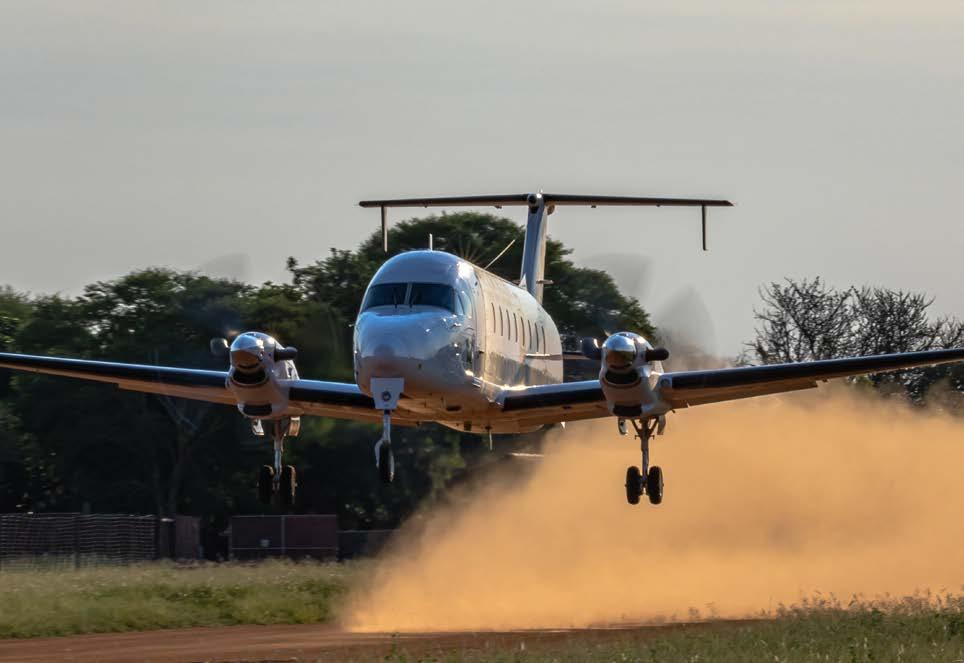
the 1900C and King Airs, the “D” model provides more passenger room, better performance and improved systems than its predecessor. The new standards and systems changes included better trim systems, aircraft stability, stall warning, control system redundancy and ice protection. These new rules also specify fail safe load paths that are essentially the same as those for FAR part 25 Large Aircraft certification rules. Thus, if for example a principal structural component fails in the wing, fuselage pressure vessel or tail, the aircraft must still be able to handle almost all of its full design loads. This has meant that the fuselage frames are spaced only
15 inches apart, which is why the windows have become tall ovals.
A further example of the increased certification requirements of the “D” is evidenced by the large panel to the right of the main cabin door. This is a composite ice shield which provides protection from ice or prop erosion strips being spun off the propellers from penetrating the cabin.
As a further concession to toughness and durability, the fuselage is pressurised to just 5.1 psi which restricts the 1900D to a 25,000 ft ceiling for a cabin altitude of 10,000ft. The King Air by contrast has a 6 psi differential and thus a 35,000 ft service ceiling. This means that the 1900D’s
fuselage remains considerably less stressed.
The 1900D’s wing might be the same size and shape as the King Air 350’s but, while the 350’s wing is built in three pieces, the 1900D’s has a one piece wing spar, also called a single carry through wing spar. The new wing is three feet longer than the 1900C’s and the winglets increase the effective aspect ratio and lower induced drag. The 1900D therefore requires less runway than the 1900C, even though it has a higher maximum takeoff weight.
Africa is generally a hot and high continent, and it is in high density altitude performance that the 1900D really shines. The new wing design and an increase in engine power over the 1900C make the aircraft almost immune to weight/range trade-offs.
At the heart of this high-density altitude capability are the 1900D’s highly flat-rated Pratt and Whitney PT6A-67D engines. Normally capable of producing over 1600 shp on a standard day, the engines have been limited to 1279 shp and so can maintain this up to an ISA standard day’s
8,100 ft. Even at MAUW this gives the 1900D a mountain topping single engine performance. The 1900D’s single engine service ceiling is 17,500 ft and if you lose an engine at gross weight at sea level it will climb at 690 fpm.
A King Air trademark is polarizing window blinds and these are absent from the 1900D. However the cabin is still a nice place to be, thanks to its almost six foot headroom. An option is an
1279 shp P&W PT-6A-67D engines and standard high flotation undercarriage.
executive interior which includes a galley and a toilet in the baggage area behind a sliding door. The layout is adaptable with seats and partitions coming out with minimum difficulty.
Passengers use the front door only. Access to the rear of the cabin is through a massively wide rear cargo door. This 72 inch wide opening provides access to the


cargo bay and the optional WC for cleaning, and it is a simple matter to load or unload large objects, including cabin furnishings, directly onto a truck. Even with a toilet, there is still six cubic metres of cabin baggage space with a weight capacity of 1,630 lbs.
The cockpit of the 1900D will be instantly familiar to King Air pilots, but with one nice advantage. The engines
and wings are now further back, providing great downwards visibility.
There are the familiar two columns of six primary power indicators for each engine, which is typical of aircraft built before 2000. The King Air only upgraded to a glass cockpit in 2004. Original avionics are the usual collection of Collins Pro Line II equipment including dual nav/ comms, a Mode S transponder, and weather radar.
The 1900D is a twopilot aircraft for Part 135 operations but there are courses available for

single pilot operation for Part 91 flights.
The start is standard PT-6. For the first start of the day ITT temperatures barely broke through the first red line at 700 degrees, far short of the 1000 degree limit.
One of the 1900D’s neat tricks is its turning circle, which is great for getting out of crowded aprons. It has a dual power setting for nosewheel steering and with the selector in the Power Park position, the aircraft can be turned inside its own length, with the inner wheel turning backwards. There is the usual Beech rudder/ aileron interconnect which means that the control wheel is locked hard over to the side for ground turns.
Once the aircraft is moving, the propeller controls are left in the ground fine position. The power levers then control the props’ pitch while the engine speed remains constant. Small power changes are therefore used to control
taxi speed and if taxiing downhill, the props can be moved into Beta to save the brakes.
The 1900D has almost 2600 shp available for takeoff which gives it one of the best power-to-weight ratios of any passenger turboprop. The abundance of power makes it unnecessary to turn off the engine bleed air so the heating and ventilation is available for passengers for as long as the engines are running.
As an uninitiated 1900D pilot a bewildering symphony of bells and whistles took me by surprise and constituted more of a distraction than help. But in the States the FAA will have your license if you bust an altitude by more than 350 ft, so the altitude alert, which is the most annoying, is also probably the most valuable.
For our flight we had 700 lbs of fuel per side and seven people aboard so we
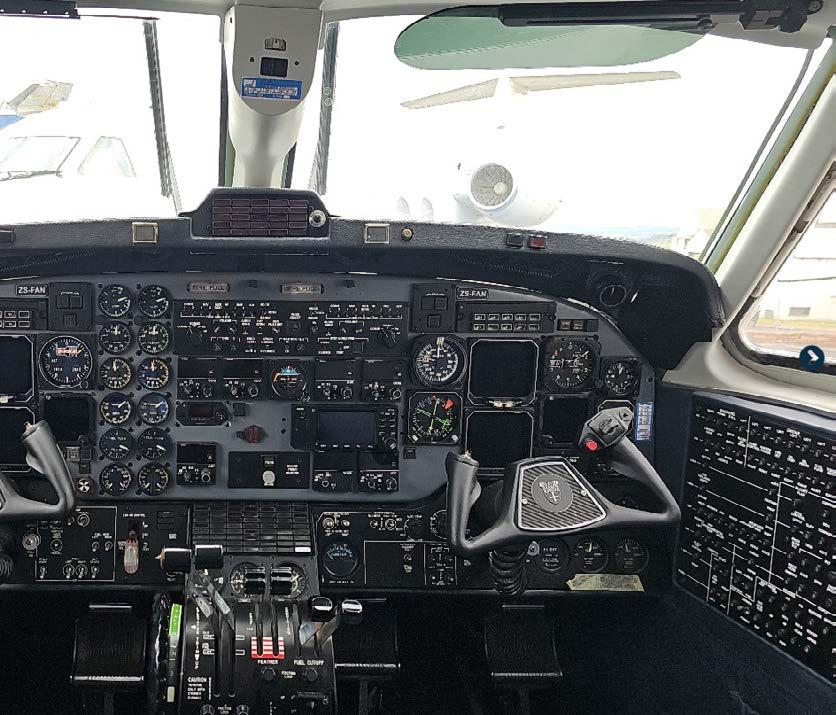





1: Access to the cockpit is through a front airstair.
2: Mix of horizontal surfaces and strakes to handle wide CofG gives great handling.
3: Most 1900D's do not have a toilet.
4: Rear fuselage features a 72 inch wide cargo door and baggage bay.
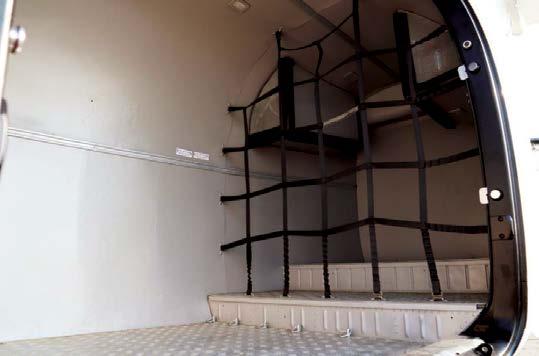
weighed about 12,300 lbs, out of a total permissible takeoff weight of 17,120 lbs. At Lanseria we had a typical African density altitude of 7500 feet.
For a hot and high departure at high weights, the flaps are left up, which increases the takeoff roll slightly, but improves the single engine climb gradient. This improved
nonetheless the acceleration was impressive. At 90 knots we rotated and jumped into the sky after a ground run of about 400m.
I watched incredulously as the VSI headed towards the stop at 4000 fpm. The altitude alert sounded for 6500 ft as we passed the airport boundary. Levelling out, power was reduced to 35% but with our light weight and momentum we kept going up at 800 fpm. If we had climbed to a normal cruising altitude of Flight Level 250 we could
climb therefore allows a higher density altitude takeoff than with flap. But, given the 1900D’s short runway requirements, it is unlikely that it will need flap to compensate for a tight runway.
Power was applied in two stages but
have expected cruise to settle down at 265 knots true for a fuel flow of 746 pounds per hour. On an ISA day a TAS of 287 KTAS should be obtainable.
The control forces are slightly heavier than the King Air’s but, thanks to all the aerodynamic devices,
the pitch and roll forces are well harmonised. One can readily see why an autopilot is an optional extra.
The 1900D is optimised for short sectors, hence it needs to be able to climb and descend quickly. With its high power-to-weight ratio, the climb to cruise in the mid-twenty flight levels typically averages out at 2000 fpm, or less than fifteen minutes from sea level to its certified ceiling.
Getting back down again is no problem using the 248 knot Vmo limitation, and when you need to slow for the circuit, pulling back the power turns the two large paddle bladed props into speed-brakes, but without the buffet.
Depending on weight the clean stall comes at around 102 knots and the flaps-down stall at 84 knots. Pilots report docile stall characteristics
There was almost no trim change with gear extension, but the flaps caused a slight pitch up
A great study by Paul Ludick of the 1900D producing wingtip vortices.

which was easily balanced with the trim switches on the wheel. The 1900D tracked steadily down a somewhat steep approach at 110 knots, reducing to 100 over the fence. With the power pulled back to flight idle for the flare, there is enough residual thrust to stop the aircraft from dropping through the ground effect cushion onto the runway, and the 1900D is well mannered and heavy enough not to float.
Sink is arrested with a gentle flare and the main wheels plonked firmly onto the short double wheeled gear legs in a surprisingly level attitude.
The 1900D has as standard the 22-inch high flotation wheels optional on the bigger King Airs. Like the King Airs they are not covered by gear doors and protrude noticeably during flight, probably costing about seven knots in cruise. This is a further indication of Beech’s design goals of ruggedness and rough field capability for the 1900D. In typical turboprop style, the 1900D stops even better than it accelerates when the props are pulled back through the indent into reverse.
Engines: P&W PT6A-67D
TBO (on condition): 6000 Hours
Wingspan: 57.8 ft
Length: 57.8 ft
Wing area: 310 sq ft
Empty weight: 10500 lbs
Useful load: 6500 lbs
Max T/O weight: 16950 lbs
Max landing weight: 16100 lbs
Total seats: 21
PERFORMANCE
Cruise speed: 287 knots
Fuel flow at cruise: 746 pph
Cruise endurance: 6 hours
Pressurisation: 5 psi
Service ceiling: 25,000 ft
Stalling speed clean: 101 knots
Stall dirty: 84 knots
Climb at sea level: 2630 fpm
S E climb: 690 fpm
In essence the 1900D is ideally suited to the demands of African operations. With its high power to weight ratio, unstressed systems and minimum no go items it provides versatile and capable transportation for almost all mission profiles.
The test aircraft and photos were made available by Lanseria based National Airways corporation (NAC), who have been very successfully operating a fleet of Beech 1900s for over thirty years. Operators love the economies and the solid Beechcraft quality.
For further information on the 1900D Contact: NAC on info@nac.co.za or call +27 11 267 5000.

The 1900's King Air heritage is very evident from the side. j
Explore NAC’s premium range of pre-owned jets, pistons, helicopters and agricultural planes — all ready to fly.


Engine TSN: Engine TSN: 855 Hours

Garmin 12” Multifunction Display & Primary Flight Display, GTX-33 ES Transponder (ADS-B Compliant), and GFC-700 Autopilot
PRICE: R7,800,000 (excl.

Modern Upgrades include Generation 6 Style Door Handle Upgrade, Baggage Door Gas Strut Installation, and Digital Fuel Level STC Upgrade


Engine TSN: 55.3 Hours

Garmin GTR-225A/B Comm Radios and GMA-342 Audio Panel

Fuel Capacity is 234 Gallons, MVP-50T Engine Monitor, and Stall Warning System


Engine TSN: 1,750 Hours


Honeywell KMD-150 VFR MFD with Aviation Database, Garmin GNC-420 GPS/Com, and TAS-610 Traffic Awareness System
Dual Controls, Auxiliary Fuel Tank (20 US Gallons), and Air Conditioner with Dual Forward Evaporators





• Now certified for TCAS training.
• RNAV and GNSS Certified on all flight models from single engine to turbine.
Tel: 011 701 3862
E-mail: info@aeronav.co.za
Website: www.aeronav.co.za
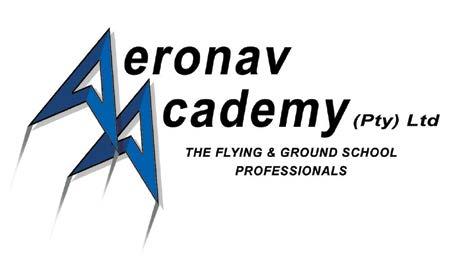













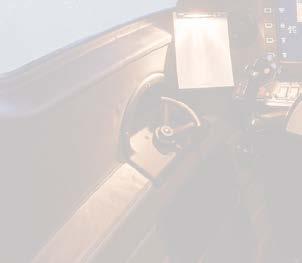




Port Alfred - FAPA R33.50
Port Elizabeth - FAPE R32.15 R24.73
Potchefstroom - FAPS R25.85 R19.26
Rand - FAGM R34.36 R21.77
Robertson - FARS R31.15
Rustenburg - FARG R29.50 R21.95
Secunda - FASC R31.05 R21.28
Skeerpoort *Customer to collect R23.61 R17.02
Springbok - FASB R34.80 R27.00
Springs - FASI R34.80
Stellenbosch - FASH R33.00
Swellendam - FASX R29.70 R20.60
Tempe - FATP R28.74 R20.73
Thabazimbi - FATI R26.35 R19.76 Upington -













This discussion contains extracts from a report by the Air Transport Safety Board of Canada. It’s to promote safety and not to establish liability.

The pilot appears to have woken up just before hitting the ground and then stalled and spun in.
Piper PA-28-180, C-GGOR
2 NM W of Brisco, British Columbia, Canada.
24 November 2023
The aircraft took off on a recreational VFR flight from Vanderhoof Aerodrome (CAU4) to Invermere Aerodrome (CAA8) with only the pilot on board.
Shortly after departing CAU4, the aircraft appeared on radar at 1243 climbing through 3000’. At 1255 it levelled off at 9,500’. It flew east and disappeared from radar at 1331. At 1421, the pilot communicated with a family member via text message that he was passing
the village of Valemount, and at 1508, that he was flying at 11,500’.
The occurrence flight was conducted above 10,000’ for an unknown duration.
At approximately 1554, the aircraft was seen in a vertical dive, approaching the ground at high speed. It was reported to have executed an abrupt pullup from the dive to a level attitude at approximately 300’ to 500’. It then reportedly had a wing and nose drop before impacting the ground in an inverted attitude.
A ground and air search was initiated after the
crash was reported to emergency services on 911. No ELT signal was received. The crash site was found more than 17 hours after the occurrence.
The pilot was fatally injured. The aircraft was destroyed. There was no post-impact fire.
The pilot held a PPL, issued in July 2022, and a valid Category 1 medical certificate. He had accumulated approximately 243 hours, of which approximately 170 hours were in the occurrence aircraft.
The pilot had flown this aircraft between CAU4
and CAA8 on a regular basis over the previous 10 months and had flown the route 13 times. These flights had an average flight time of 4.1 hours.
Weather information
There was no cloud ceiling and the visibility was greater than 20 statute miles. Weather was not considered to be a factor.
The aircraft was built in 1963. It had a 180 hp Lycoming O-360-A3A engine and a fixed-pitch propeller.
The pilot had a history of using 91-octane gasoline,
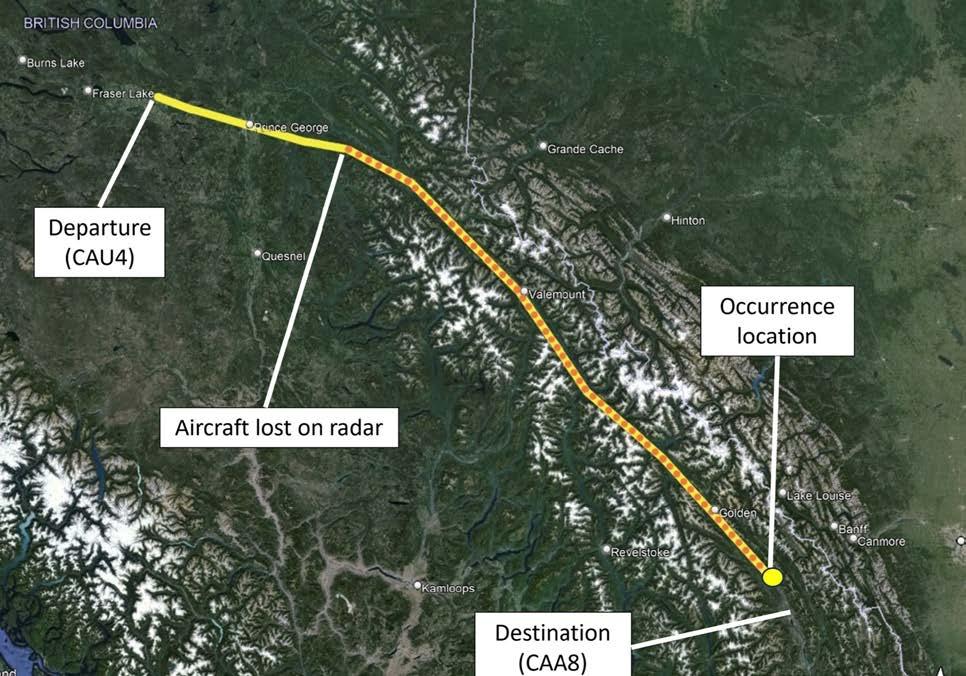
JIM DAVIS
known as MOGAS. The POH requires that the aircraft use aviation-grade fuel. In order to operate the aircraft with other than aviationgrade fuel, such as MOGAS, a supplemental type certificate (STC) is required, however this was not issued. It could not be determined if this was a contributing factor to the outcome.

The stall warning light and burned filament.
The aircraft’s last annual inspection had been completed on 28 March 2023.
An airworthiness directive exists requiring inspection of the exhaust-type cabin heater to reduce the risk of carbon monoxide poisoning. The aircraft’s technical records indicate this AD was not completed and was overdue by more than eight months; however, carbon monoxide poisoning was determined not to be a factor in the occurrence.
The investigation found no indication that a component or system malfunction played a role in this occurrence.
The aircraft was equipped with a stall warning system, which consisted of a red-
filtered, incandescent lightbulb that illuminated when the system detected the aircraft was at, or near, a stalled condition.
A lightbulb filament analysis showed that the typically tightly wound coils of the filament were severely stretched. This occurs when an illuminated light filament becomes more ductile as a result of the high temperature from its illumination and is then exposed to sufficient shock. This filament stretching indicates the stall warning light was illuminated at the time the aircraft struck the ground.
Flying unpressurized aircraft at al-
titudes above 10 000’ ASL without supplemental oxygen can lead to hypoxia.
Where an aircraft is operated at cabin-pressure-altitudes above 10,000 feet ASL but not exceeding 13,000 feet ASL, each crew member shall wear an oxygen mask and use supplemental oxygen for any part of the flight at those altitudes that is more than 30 minutes.
Where an aircraft is operated at cabin-pressure-altitudes above 13,000 feet ASL, each person on board shall wear an oxygen mask and use supplemental oxygen for the duration of the flight at those altitudes.
The aircraft was not equipped with oxygen masks, or supplemental oxygen. The investigation could not determine how long the aircraft was operated above 10 000 feet ASL.
The aircraft came to rest in a wooded area in an inverted attitude. The wreckage indicated a high-angle impact with little forward velocity. One propeller blade exhibited rearward bending whereas the other blade had a slight forward bend, which is consistent
with low or no propeller rpm at the time of impact. The aft section of the fuselage and tail were bent to the right, and both wings were found on the left side of the fuselage, indicating rotational forces existed when the aircraft struck the ground.
The aircraft was equipped with an automatic fixed ELT on 121.5 MHz and 243 MHz. The ELT did not activate. It was found in the OFF position.
While the investigation could not determine the specific cause of the occurrence, it found some maintenance required for the safe operation of the aircraft had not been performed. Owners and operators of aircraft are reminded that compliance with legally required aircraft maintenance activities, including airworthiness directives and supplementary type certificate requirements, is essential for the safe operation of all aircraft.
The thing about hypoxia is that you don’t see it creeping up on you with
murder in its eye. If a hungry lion suddenly appeared in the cockpit you would immediately recognise the danger and you would do something about it. You might offer it your bacon sanga, or shoot it in the head.
My point is the lion would make itself known to you. You would smell the brute, hear its roar and feel its hot breath on your neck.
Hypoxia, on the other hand, will kill you just as dead, but it’s a sneaky bastard. It will induces euphoria and gently lull you into a peaceful sleep. You may awake shortly before your components mingle with those of a hot Lycoming.
Hypoxia is the gentle sting ray that killed Steve Irwin, the Aussie Crocodile man. I has no warning teeth like a lion or croc.
It seems that this pilot lived a few seconds longer. He appeared to have been woken – probably by the terrifying sound of rushing air and then the sight of scenery filling his windscreen.
He hauled on the pole –missed the planet but then kept hauling until he spun into the tundra.
Some years ago I was returning to George from an airforce camp on the
Limpopo. The aircraft ZS-DPI, was a magnificent red and white 250 Comanche with tip tanks. This meant we could easily fly the length of South Africa in one hop.
In round figures it’s 900 statute miles and we cruised at a bit over 180 mph which made it a 5 hour flight. To avoid summer turbulence we flew at flight level 105.
I had three pax, but the guy in the front with me was our intelligence officer, a really bright guy called Casey Adderson. We chatted about hypoxia and Casy found it hard to believe that he was in any way mentally impaired, so we conducted a test. I’d give him headings and timed how long it took him to work our the reciprocal. We averaged his times over ten tests and it came out to be around 25 seconds.
After landing we did the same exercise over a cup of coffee in the airport restaurant and he was doing it in less than five seconds.
This means that for most of the trip we were totally unaware that the lion was sniffing the air and smelling our blood.
On another trip I was flying two visiting Portuguese Airforce generals up the Caprivi Strip in the same aircraft. This was during our disagreement with Castro and the naughty communists.
We were at flight level 115 in order to be pretty much out of range of SAM 7s. It was just after lunch and a hot day and I managed to go to sleep at the helm. Fortunately the autopilot prevented my pax from noticing their captain had gone AWOL.
We have all dozed off for a second or two while driving a car, while knowing full well that this can end in death – but we still do it. I have actually done it on a motorbike on a dirt road in Tanzania.
The four big dangers of hypoxia are:
• Being a bit slow out of the starting gate.
creeping up on you with murder in its eye
• Thinking that you are pretty smart – like after you have got outside a couple of snorts.
• Knowing that you will definitely manage to stay awake.
• Being totally unaware of the lion lying on the back seat. j






Day and night, the fun doesn’t stop!
Our catered camp site on the airfield means you won’t miss out on any of the activities – the early morning wake up call of P 51’s getting airborne, the evening ultralight parade, the STOL competitions and of course, the incredible night airshows! Plus all the camaraderie and fun only a camping group can offer.


Our campsite offers you a home from home at Oshkosh, tents and bedding, meals and beverages, charging facilities and sheltered seating – no camping gear required, bring only your clothes!
Tours depart Johannesburg, Durban or Cape Town Friday 18th July and return Tuesday 29th July 2024.
Prices from R40 650, Early Bird specials available!
Secure your place HERE
Neil +27 84 674 5674 info@airadventure.co.za www.airadventure.co.za

ABOVE: GK with Iris at Wilson.
OJanuary
1981 started off excitingly which would portend how the year would turn out for me.
N 2 January I took off out of Nairobi Wilson, heading for Keekorok in the Mara, where shortly after I had a left engine failure on the C401, reg N65175. I returned to Wilson and landed safely, to find that the engine fuel pump had failed.
I took the PA 23T 5YWKA instead and headed off to Keekorok. Besides my passengers having a day in the Mara, I was meeting up with GK (Goktug Zafer Bayraktar) my very good friend, who was one of the Air Kenya pilots.
GK was Turkish and had had a very interesting childhood as his father had been a pilot in many
different countries for the US government. GK had suggested that as we were both at Keekorok, we could do some of my daytime training with Beech Baron BE55 5Y-APO to get me type-rated on the aircraft.
Keekorok Lodge is in Kenya’s Masai Mara National Reserve. It was first built in 1962, making it one of the oldest lodges in the area. It was strategically laced in the direct path of the annual wildebeest migration and hosted personalities like first President of Kenya, Jomo Kenyatta, Prince Charles, Henry Kissinger. Jackie Onassis did her first balloon flight with Alan Root from Keekorok in August 1974.
Keekorok air strip at that time was mix of murram
and bitumen, at an altitude of 5800 feet. My notes give the runways as 10/28 and 1280 x 18 metres with a slight uphill on Runway 10. Being in the Mara, it was always busy with animals and large birds of prey. Coming in to land, we always flew over the airstrip to check the surface and chase whatever animals (Thompsons, Grant’s gazelles, zebra, impala and wildebeest) were grazing on the side, or just catching the sun.
GK and I were on different flight schedules. I was there for a day drip with
my passengers and he was dropping his off to spend a few days in the Mara. We certainly had fun for the
of day the density altitude was frightening and the thermals required major vulture avoidance.
with your eyes peeled like a chameleon
next half an hour in the Baron, even if our timing was not at its best as we could only do this between 2.00 and 2.30 pm before GK had to return. At that time
The Mara is an excellent training base as you are 100% aware and committed on short final with your eyes peeled like a chameleon watching the game close to the runway and praying it stays where it is. Otherwise you have to overshoot, watching out the whole while for birds, and join downwind again.
All of this was in an unfamiliar aircraft. These challenges are what make a good pilot.

Keekorok Airstrip was built on the wildebeest migration.

Keekorok airstrip was about two miles away from the lodge. There are few obstacles on the way to the lodge. If you and your aircraft were spending the night, or all day, you could taxi all the way to the lodge, park your aircraft and get breakfast or lunch.
Someone decided that putting in a cattle grid on the taxiway was a good way of keeping the animals out.
I think the same person also thought it was an excellent idea to fence the runway all the way round. But antelope and gazelles are not cattle and jumping over the cattle grid was nothing to them. Once in the airfield area they would happily graze on the side of the runway.
Trying to land next to animals which may feel trapped is always a challenge. You never knew if they would calmly continue to graze or, at the last minute, you would have a Thompson’s gazelle flash across in front of your props.
Tony Kennaway, who is a legend in East Africa, is a very good friend of mine. He was using the long taxiway down to the lodge in a C206. Halfway down, he got charged by a male ostrich with its feathers all the way out and making bullish noises at the aircraft.
Tony did not want the ostrich to run into the propeller, so he opened the door and shouted and screamed every profanity at the ostrich that he could. Fortunately, all ended well as the ostrich gave way to Tony.
Colin Davis, engineer par excellence, who has put back together most of the aircraft in East Africa that had accidents, relates a story of his part share in a Piper Aztec (5Y-CMO) that was leased to Air Kenya. The pilot was taxing down to the lodge and went over
the cattle grid too fast and banged both props on it and wrote them off.
Many, many years later it was decided to remove the fence, but the cattle grid remained.
So yes, we were all familiar with the challenges of Keekorok. This included the ballon safaris people. Ballooning became very popular in the Mara and Serengeti. The balloons were launched early in the morning close to the lodge. Still air is best for that kind of flying. There was an incident when one of the ground handling staff was late in letting go of the rope and went up with the balloon, holding on for dear life. They were unable to lift him up into the basket, and he eventually let go and dropped amongst the early breakfast guests.
The joy of flying around East Africa has its challenges, as well as the many beautiful places that we have the privilege of visiting.
Back at Wilson, GK and I met at the Top Office of the Aero Club for some well-deserved refreshment. The excitement of adding another aircraft type to my licence was always special.

A
random post on Face
-
book from Westley Blom:
“I thought FO stood for Flap Operator? Maybe my Captain misinformed me.”



































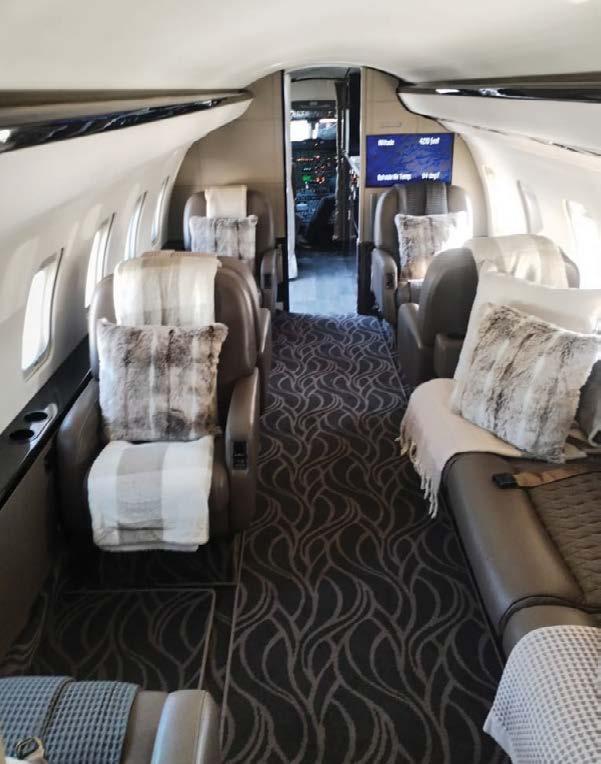

03/May/2025 SAAF Museaum Air Show
10/May/2025 Nelspruit Airshow
Swartkop Pretoria
Old Nelspruit Airport 17/May/2025 New Tempe Airport AirShow New Tempe Bloemfontein
20 - 22 May 2025 EBACE Pal Expo Geneva
https://ebace.aero/ 22 - 24 May 2025 Presidents Trophy Air Race: Bona Bona david@pilotinsure.co.za cell: 073 338 5200
31/May/2025

Shuttleworth Military airshow Old Warden UK
27 - 31 May 2025 Zimbabwe navex
31/May/2025 Newcastle Airshiow
16 – 22 June 2025 Paris Air Show Paris-Le Bourget

https://www.shuttleworth.org/product/military-airshow-2025/
https://zimairrally.com
Newcastle KZN
https://www.siae.fr/en/
25 -27 June 2025 AERO South Africa Wonderboom https://aerosouthafrica.za.messefrankfurt.com/pretoria/ en.html
28/June/2025 Virginia Air Show Virginia Airport Durban
18 - 22 July Royal International Air Tattoo Fairford UK https://www.airtattoo.com/ 25/July/2025 Polokwane Airshow Polokwane Limpopo
21 - 27 July 2025 EAA AirVenture Oshkosh
20/September/2025 Rand Airshow
Contact Neil Bowden: 084 674 5674 info@airadventure. co.za
Rand Airport Germiston 17-21 November 2025 Dubai Airshow UAE https://www.dubaiairshow.aero/
21 - 27 July 2025 EAA AirVenture Oshkosh
20/September/2025 Rand Airshow


Contact Neil Bowden: 084 674 5674 info@airadventure. co.za
Rand Airport Germiston 17-21 November 2025 Dubai Airshow UAE https://www.dubaiairshow.aero/
25 July 2025 Polokwane Airshow Polokwane Limpopo
21 - 27 July 2025 EAA AirVenture Oshkosh
20 September 2025 Rand Airshow
Contact Neil Bowden: 084 674 5674 info@airadventure. co.za
Rand Airport Germiston 17 - 21 November 2025 Dubai Airshow UAE https://www.dubaiairshow.aero/





AERO 2025 was held in Friedrichshafen, Germany, from 9-12 April, and is billed every year as the largest general aviation expo in Europe.
ABOVE: For 2025 the weather held good for the outdoor expo.
SA FLYER MAGAZINE -MAY 2025
AERO Friedrichshafen claims to be the global platform for all aspects of General Aviation –discover the variety of our industry in 12 exhibition halls and our static display ranging from Gliders, Ultralights, piston aircraft and helicopters up to Business Aviation. With more than 756 exhibitors from more than 38 countries, 32,000+ attendees and 500+ journalists from all over the world, AERO Friedrichshafen is the international community’s annual meeting place.
The large number of innovations and premieres in all areas underline the importance of AERO as a global showcase for aviation. Among the world premieres at AERO this year was the Chinese electric aircraft RX4E, the world’s first four-seater electric aircraft to receive its certification in December 2024. It was shown in the static display at AERO and flight at the e-Flight Airshow. The Pilatus PC-12 PRO single-engine turboprop aircraft also celebrated its global trade fair premiere at AERO. The Swiss Smartflyer electric aircraft project, whose prototype only celebrated its roll-out in November 2024.
The AERO 2025 – the 31st edition of the trade fair – impressively demonstrated its position as the leading global trade fair for general aviation, air sports and business aviation. 760 exhibitors from 38 nations showcased a total of 328 aircraft (2024: 270), ranging from drones to gliders, microlights, single- and twin-engine piston aircraft, helicopters and ultra long-range jets.

The largest hangar is still dedicated to gliders and Jonker Sailplanes unveiled their JS5 REY to the international aviation community. It then followed up with a first flight on Euorpean soil, from the beautiful airport of Augsburg.
This year’s Expo broke records for aircraft on display. Many exhibits were on display for the first time at a trade fair. In total there were 32,100 visitors, compared to 2024’s 31,500, from more than 80 nations who travelled to Lake Constance for the GA Summit.
“AERO 2025 met all expectations and exceeded many,” said AERO show director

Despite the rise of business aviation, gliders still have their own hall at AERO.



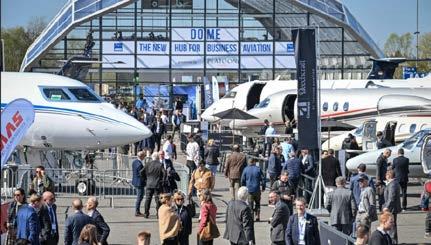
The LSA market in Europe is dynamic.

Tobias Bretzel. “The mood in the industry and among the audience was excellent. Without exaggerating, I can say that this was the best AERO ever, and the great result is spurring us to take AERO 2026 to the next level.”
AERO 2025 also featured a dedicated 2000-sqm business aviation hub for the first time, to enhance what has been described as the largest line-up of business aircraft at any trade fair in Europe.
The 2026 edition of AERO Friedrichshafen is scheduled for 22-25 April.
AERO is now a global brand. AERO South Africa will take place at Lanseria International Airport in South Africa in June (June 25 - 27, 2025).







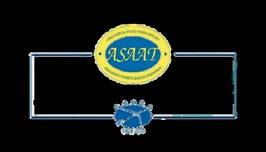










Established in 1945, SAAFA has built a legacy of friendship and support that spans generations. It took the opportunity this milestone to honour its achievements while looking forward to the future.
Founded by Colonel Rod Douglas, a World War I veteran and visionary, SAAFA began as an initiative to ensure the welfare of airmen, widows, and families after World War II. This compassion-led approach remains the cornerstone of the Association, bringing together aviationminded individuals to create a community that transcends rank, geography, and circumstance.
As an organisation deeply rooted in benevolence, SAAFA provides unwavering support to less fortunate ex-SAAF members and their spouses. From main-
taining friendships to caring for the aged, and commemorating those who sacrificed their lives in service, SAAFA exemplifies the spirit of camaraderie and collective responsibility.
SAAFA’s 80th year was celebrated under the inspiring theme, “Our Legacy,” which highlights its dedication to benevolence, camaraderie and the heritage of aviation.
With the slogan “Be part of our Legacy” the Association invites members and enthusiasts to join in a year-long celebration that honours the past while embracing the present.
Branches across Southern Africa—from Bloemfontein to Cape Town and beyond— will host fundraising events, sports outings, luncheons, and more. Activities such as golf, bowls, horse racing, and the “Fly-in-Braai” days provide opportunities for members to bond, share their love of

aviation, and contribute to meaningful causes.
One of SAAFA’s most significant contributions is the establishment of memorials honouring fallen airmen. The National Air Force Memorial, situated atop Bays Hill near Swartkop Air Force Station, symbolizes flight and serves as a living monument to those who served. Continuous upgrades ensure it represents the inclusive history of South Africa’s air forces, while its Eternal Flame commemorates all groups that united under the South African Air Force.
SAAFA’s commitment to preserving history extends to caring for those who made history. Projects such as its Care of the Aged programme embody its dedication to uplifting ex-SAAF members and their dependents, ensuring that the Association’s legacy is one of compassion.

The 80th anniversary is not only a celebration but a call to action—to honour the wisdom and dedication of its members, who have guided the Association through changing times. With strong branches in Southern Africa, Dubai, and China, SAAFA remains a vital force in promoting the heritage of the South African Air Force.

SAAFA honours those fallen in service.
Church Belinda Valhalla 079 636 9860 churchbs@live.com
Du Plessis Alexander Athlone Park 031 904 7460 dex.duplessis@intercare.co.za
Erasmus Philip Benoni 011 849 6512 pdceras-ass@mweb.co.za
Feinberg Rodney Lyndhurst 011 882 6010 rodneyfeinberg@gmail.com
Govender Deena Umhlanga Rocks 031 566 2066/7 deena@drdg.co.za
Head Brandon Sandton 010 448 0900 reception@drbradonhead.joburg
Maneli Lumka Sandton 083 471 2051 lumka@doyioccuhealth.co.za
Toerien Hendrik White River, Nelspruit 013 751 3848 hctoerien@viamediswitch.co.za

It’s hard to believe that we are more than a quarter the way through 2025 already. The March register updates reflect a busy month with 17 new registrations and 10 exported airframes.
THE first addition this month is a brand new Phenom 300e jet ZS-ENT (50500855) that was delivered to its proud new owner in Bloemfontein on 11 April. The jet will be operated by a logistics company based in the City of Roses and replaces a Premier 1A. It would seem that the owner had a bit of a European vacation heading to South Africa as the jet departed Goose Bay on 24 March and travelled via Belgium, Spain and France before finally heading to SA via Tamanrasset, São Tomé and Walvis Bay. I look forward to seeing and photographing this jet in the near future!
Another Cessna Grand Caravan is registered locally as ZS-OJD. This 2014-built Caravan was previously operated in Africa by the NGO Aviation Sans Fron-
tieres as F-OJJD, based in Bunia in the DRC. It arrived at Lanseria on 11 February and now takes up local registry.
Yet another new Air Tractor AT-502B, ZS-XAJ, is registered. I suspect that the plane is another addition to Wonderboom-based Xcalibur Airborne Geophysics’s fleet as their survey planes use the ZS-XA* registration series.
It has also been a busy month for helicopters with four being registered. First off are a pair of the sleek Bell 430 helicopters. These, along with the earlier Bell 222/230 series, have found a niche market in Southern Africa in the corporate, medevac and utility applications. The first is ZS-RLK (49047), a 1998-model and the second, ZS-RLO (49096) a 2002-model. Both were previously operated by the Kuwait Ministry of health in a medevac application before being sold.
One each of the ever popular turbine workhorses, the Airbus H125e (Squirrel) and Bell 407 were registered. These continue to be great seller in the local marketplace for their respective manufacturers.
The NTCA category shows continued strength this month with 10 additions. Leading the pack is the ever popular Sling Aircraft family with three Sling TSi and a single Sling HW being registered. From the odd SACAA practice of using homebuilders’ names as the aircraft manufacturer we can deduce that the three Sling TSi planes were completed from kits by homebuilders.
One that has me a bit puzzled is an EV4, which seems to be a Robinson R44 but I am not sure why it has this designation. Perhaps some of the readers can inform me? There also seems to be an almost insatiable demand locally for vintage French manufactured turbine helicopters. This month two more Alouette IIs (ZU-RAW and ZU-RDN) and a Gazelle (built under licence in the UK by Westland) ZU-RBZ, are registered.
The last two new register entries for March
BELOW: ZS-CHE may have been one of the oldest Cessna 182s in SA - Now exported to Uganda. Image: Heather Arnold


ZS-HSF was a SA Police BO-105 - now one of a number rebuilt and exported to Kazakstan. Image: Kjell O Granlund

ZS-SDW is a Diamond DA42 which appears to have been written off and thus deleted after a wheels-up accident. Image: Joe Evans

Federal Air's Cessna Caravan ZS-CNA (not CAN) has been exported. Image: Tsephe Letseka.
BELOW: SN15038, one of 3 new CRJ900s for Cemair still in its previous colours

are a Savannah S and a kit-built HR2.
Several aircraft are deregistered this month. First off is a Cirrus SR22 ZS-KEV that was sold in the USA. Its ferry flight to the USA was covered in last month’s Register Review so I won’t repeat it again. A Learjet 60 ZS-TEJ has been exported to Austria and is now registered OE-GDS. The jet departed Lanseria on 17 February routing to Vienna via São Tomé. This sadly leaves just one of these sleek jets, the biggest Learjet to come from the iconic manufacturer’s stable, still registered in South Africa.
An elderly 1958 Cessna 182A ZS-CHE has moved to Uganda for the next chapter of its life. A Cessna Caravan ZS-CNA (not ZS-CAN as indicated by the SACAA updates) is exported to Namibia, no doubt for operations in support of the country’s tourism industry. Finally, a Diamond DA42 Twin Star, ZS-SDW is simply “cancelled” with no reason given. This aircraft made a wheels-up landing at Lanseria on 25 February this year so perhaps the damage sustained was greater than anticipated and it’s been declared a write-off?
Police Services Airwing Bo-105, ZS-HSF. It has now found a new home in Kazakhstan after being retired by SAPS. This is the second of these Bo-105s to go to Kazakhstan. Two Bell 412s depart our shores – most likely on contracts abroad? The first is ZT-HNG that is exported to Canada while its sistership ZT-HNH is cancelled to the UAE. Finally, a Robinson R44, ZS-RIV is cancelled as ‘withdrawn from use’.
The last deregistration is a Sling 4 ZU-ITG that has been exported to Zambia.
Sadly two regular participants at local airshows were involved in fatal crashes destroying the planes. The first was the tragic loss of the sole airworthy former SAAF Impala MkI, ZU-IMP that crashed during a display at the Saldanha Airshow on 22 March. The second was a Slick 540, ZU-TNT, that crashed near the Kittyhawk Airfield on 12 April. Both of these aircraft will no doubt be cancelled in due course.
Looking ahead to next month, I can reveal that four new airliners have been delivered to OR Tambo International Airport recently for operations by local airlines: The A320 joins SAA’s growing fleet and three CRJ regional jets (two CRJ900s and a CRJ700) will join Cemair’s rapidly growing fleet. But more about these next month!
By the time you read this column, yet another PC-12NG, ZS-FAF (2449) will also have been delivered so we can expect another bumper month or two ahead for new registrations.
Four helicopters are cancelled this month. The first is a former South African
There has been a lot of movement in the corporate jet marketplace that has not yet
been communicated to SA Flyer through the monthly SACAA Register Updates.
The tenth PC-24 jet destined for Africa was seen outside the assembly hall in Stans, Switzerland in late March. While not confirmed, it is thought (my educated guess) to be heading to a South African owner by virtue of its green and gold cheatlines! I will update you on this matter in a later edition of this column.
I am also informed through industry sources that two elderly Citation corporate jets have been cancelled to the ZS register from the American civil aircraft register. Both of these have been resident in the region for a while. The first is a 50-year old Citation 1 N202HM (500-
0260) that has been resident in Zimbabwe for several years while the second is a similarly aged Citation 1, N752CK (5000255) that was delivered to South Africa in 2024. This jet also seems to now be based in Harare after a spell resident at Wonderboom Airport.
A head scratcher is a 2006 Global 5000 9H-ARE (9174) that arrived at Lanseria in February of this year. The jet is in maintenance at a local AMO and was reportedly sold to a locally based client. I had an enquiry from a European based industry contact who queried if this jet had carried, or had actually been allocated the registration ZS-BFF as this registration was mentioned in documents as it previous registration for its registration in the Isle of Man as M-MBFF. Again, can any of our readers confirm this registration was actually allocated, even just as a paperwork exercise or for maintenance purposes, as I am not aware that this registration was actually applied to the aircraft? j









ZU-MEY


























Rolls-Royce says that it aims by mid-year to freeze the design of a smaller demonstrator version of the UltraFan geared turbofan as part of plans signalling its serious intent to target the single-aisle market.
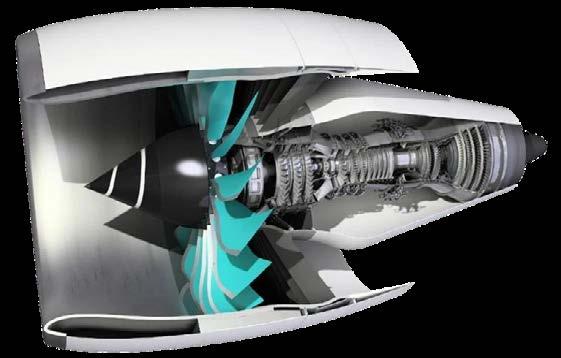
ABOVE: Rolls Royce's Heaven Technology project for single aisles.
THE RR demonstrator is scheduled to undergo ground tests in 2028 and will pave the way for a more than 30,000-lb.-thrust class engine designed to power successors to the Airbus A320neo and Boeing 737.
The initiative fulfils a strategic goal unveiled by CEO Tufan Erginbilgic in late 2023 and marks a key step in Rolls-Royce’s renewed ambition to re-enter the narrowbody sector, which it effectively abandoned with the 2012 sale to Pratt &
Whitney of its shares in the International Aero Engines collaborative venture.
The new geared engine demonstrator will leverage technology developed for the much larger 80,000-lb.-thrust UltraFan, which ran in 2023 and is positioned to compete in the lower thrust bracket with the Open Fan in development by CFM joint venture partners GE Aerospace and Safran, as well as a next-generation variant of Pratt’s PW1100G geared turbofan.
“We’ve launched the design of a small engine demonstrator, which is around the kind of thrust level you’d need for a narrow body application,” says Alan Newby, Rolls-Royce’s director of aerospace technology and future programmes.
Newby says the broader strategy also includes renewed investment in tests of the larger UltraFan, which will continue to be developed in parallel.
The small UltraFan initiative leverages design elements developed for RollsRoyce’s Pearl 10X—a business jet engine based on the company’s Advance2 core project. It also leans on technologies from HEAVEN—for Hydrogen Engine Architecture Virtually Engineered Novelly.
Targeting a 20% integrated fuel burn reduction, as well as enabled for sustainable aviation fuel and hydrogen, the HEAVEN project has included tests of an advanced power gearbox, improved combustor designs and the design of a new intermediate pressure turbine.
VIO Aviation 083 230 7821
Mont Blanc Financial Services 0800 467 873

www.vioaviationsolutions.co.za
www.mbfs.co.za a PRETORIA
Ardent Aviation 082 784 0510
www.ardentaviation.co.za a a a yolanda@ardentaviation.co.za
Vektor Aviation 012 247 5010
www.vektoraviation.co.za a CAPE TOWN
Litson and Associates (Pty) Ltd
+27(0)21 851 7187
safety@litson.co.za NATIONAL iTOO
www.litson.co.za *FSF BARS/IOGP/IATA/ICAO/CAP 437 a
www.itoo.co.za a

NAC (021) 425-3868 www.nachelicopterscapetown.com

Cape Town Helicopters (021) 418-9462 www.helicopterscapetown.co.za
GEORGE Titan (044) 878-0453 www.titanhelicopters.com
NAC (011) 267-5000 www.nac.co.za
Leading Edge (013) 741-3654 www.leadingedgeaviation.co.za
NAC (011) 345-2500 www.nac.co.za
VIRGINIA
BAC (031) 569-1531 www.bachelicopters.com
NAC (031) 944-1678 www.nac.co.za

Up to 6 passengers with their luggage.
If evidence is needed that all-electric flight is an option for some operators, Canada based Harbour Air completed 100 flights of its eBeaver.
THE eBeaver is powered by a MagniX propulsion system that includes the motor, control electronics, and cooling system.
MagniX chief technology officer Riona Armesmith says, “We’ve been flying the eBeaver for five years now. Dispatch reliability of the MagniX powerplant is 100%, which is pretty phenomenal for a first engine, and that’s across all of our platforms.”
One of those other platforms is a Robinson R44 helicopter modified by Unither Bioelectronics, with a MagniX electric motor powered by a hydrogen fuel cell. The hydrogen-powered helicopter achieved its first flight on March 27.
The eBeaver flights are short so the number of hours logged isn’t high. The first batteries are an earlier generation that requires time to cool after each flight before being recharged overnight. New batteries developed by MagniX are cooled while they charge, which will speed up the turnaround process. “The rate of flights that they were able to do with the older battery system was quite limited,” she explained.
Harbour Air next plans to demonstrate the eBeaver with an international flight between Canada and the U.S., which should help stimulate Transport Canada’s electric aircraft regulatory muscles, she explained. Another effort will be to put the eBeaver

on wheels, she added, “because they’ve had a lot of interest in the aircraft on wheels instead of floats. They’re going to be doing performance flights to see how much more they can get out of the aircraft when it’s on wheels.”
Meanwhile, MagniX has introduced a new HeliStorm propulsion package for helicopters. The plan is to match the MagniX system with the helicopter’s existing gearbox to make conversion simpler, and the motor runs at higher RPM to match the input speed of the gearbox.
MagniX began developing its own batteries 18 months ago for better integration with its propulsion system. “We felt like we needed to control our own destiny in that,” she said. Battery development still is a pacing item for certification of electric propulsion, but she believes that Harbour Air should have a smoother path to certification of the eBeaver as it qualifies as a Level 2 Part 23 airplane with seating for two to six passengers, as opposed to more complex rules for higher numbers of passengers or Part 25 aircraft.
However, the eBeaver can’t be certified until its electric powerplant receives approval. “We have special conditions against Part 33 for the electric engine, and we’re making good progress,” Armesmith said.
BELOW: Harbour Air brought its eBeaver to last year's EAA AirVenture j




As the South African rand continues to weaken under pressure of a wealth destructive government and the fear of a Trump tariff driven international recession, the value of a general aviation aircraft has increased. Refurbishment and maintenance companies have found themselves in strong demand.
There are many jobs other than pilots.

THE refurbishment industry has made it possible to own old aircraft that are as good as new. And you can also add a lot of sexy new avionics kit, such as terrain avoidance systems that a fifty-yearold piston single would have lacked because those systems had not yet been invented.
South Africa still has a thankfully deep repository of skills in aviation maintenance and a thriving industry refurbishing old aircraft. It is not uncommon to find 60 year old airframes being refurbished to genuinely better than new condition, thanks to engine improvements and updated avionics, particularly since ‘glass cockpit’ instrumentation has become far more affordable and easy to install – even in type certified aircraft.
These days a good used Cessna 182 with perhaps a midlife engine can be bought for around R2 million – which is a seventh of the price of a new plane. Not only have you saved millions, but your insurance is much cheaper. Of course, maintenance will be a bit – but not that much – higher. And this is where a good AMO comes in.
SA Flyer owned a Cessna 182, ZS-FPI, and then a complex turbocharged retractable Piper Saratoga, ZS-OFH. What we learned is that the differences in maintenance between a good and poor AMO is very noticeable in terms of aircraft availability and reliability. This was evident when we switched from the Rand Airport based agents to Ferreira Aviation in Bloemfontein.
G600 and G1000. And for those aircraft that have the performance – the installation of altimetry to meet RVSM requirements. Specialist avionics installers at Lanseria such as Century Avionics pioneered the installation of the industry standard Garmin G1000 into King Air 200s and these have now become a very popular upgrade across the industry.
BELOW: Instrument upgrades such as this to SA Flyer's C182 improve the aircraft's capability and safety.

Avionics are the field where the most progress has been made and this makes older aircraft excellent candidates for an avionics upgrade. Particularly popular are STCs for the installation of the industry standard Garmin
Typical installations include a dual air data attitude heading reference system (AHRS), dual PFDs, a centre MFD with moving map, FMS, navcoms and WAAS GPS, radar display, and a pedestal-mounted FMS keyboard. Popular too are
numerous electronic engine instrument displays and a battery powered all-in-one standby PFD.
A typical avionics selection for the upgrade of older piston singles involves a Garmin G600 glass-panel with synthetic vision as a PFD for the pilot’s side. This gets its data from a WAAS capable, TAWS-B certified Garmin GNS 530W and GNS 430W GPS/navcom that fits in the centre radio stack.
On the right side of the panel a JPI EDM 930 engine-monitoring screen that displays all engine parameters including fuel flow, rpm, manifold pressure and electrical output is an ideal partner for GAMI injectors for better temperature control and lean of peak operation for fuel injected engines.
The leader in engine upgrades to the ubiquitous turboprops that are so popular in Africa is Blackhawk. This company has specialised in upgrades to the engines of the King Air range in particular, but also handle Cessna Caravans , Pilatus PC-12s and Piper Cheyennes.
Blackhawk’s XP52 engine upgrade exchanges
the B200’s original PT6A41 or PT6A-42 engines for factory-new Pratt & Whitney PT6A-52 engines. No major airframe modifications are required and some of the key benefits are for Africa’s hot and high operations: the extended maximum operating ITT to 820 C with a higher horsepower flat rating of more than 1346 shp which enables it to reach higher altitudes more quickly, fly higher and faster and thus reduces
becoming more fuel efficient, are excellent candidates for refurbishment. This is especially evident in the re-engining of older airframes such as the HS125-400 with modern high bypass fan jets.
Even the basic jets with OEM fanjets such as Cessna’s Citation 501SP are able to benefit enormously from engine upgrades. New engines such as the Williams FJ44-

specific fuel consumption. It is calculated that this typically saves $38,000 per year in reduced operating costs.
Bizjets, which tend to age quicker due to higher utilisation and faster obsolescence due to jet engine designs
ABOVE: Specialists such as Century Avionics can bring new life to older aircraft such as this King Air 90.
2As, which put out 2,300 pounds of thrust a side, provide a much needed performance improvement. At better than 400 knots
TAS (50 knots faster than the original) and with a full fuel payload of 1,670 pounds, the Williams engine upgrade takes a well loved aircraft and makes it faster, stronger and gives it a 1,400 nm IFR range.
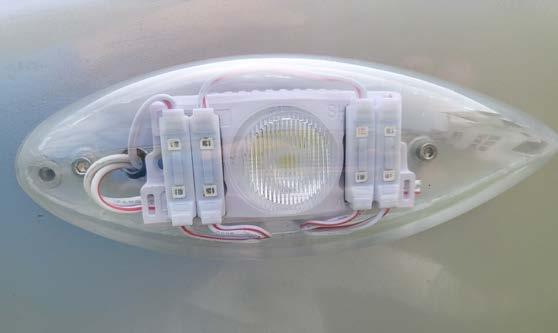
ABOVE: Regular upgrades include durable LED lights.
It’s not just about engines and avionics – refurbishment customers want their planes to look like new. All good paint shops start with a complete paint strip and prime, followed by three coats of base paint with additional coats for the colour. Decals are becoming an increasingly popular option. Specialists can do you custom paint schemes as was the case with the yellow extremities we had for better visibility on our C182 and the ‘heart attack’ scheme
on our Saratoga. This scheme was done by our artist Darren Edward O’Neil and we were so pleased we added his signature. Darren will propose a sketch layout and then, with painstaking attention to detail and proportion, make sure it is applied as intended to the physical requirements of the actual aircraft.
A key point to remember when repainting aircraft is that it must be done by an approved maintenance organisation as the control surfaces have to be removed and then professionally rebalanced before installation.
Interiors are another critical item –most owners elect to use wool carpeting, and new padding and leather covering for seats. All materials must have a fire certificate – so this is not a job for non-aircraft approved suppliers, even if they are much cheaper.
Another popular aftermarket option are airbags – built into the seat-belt for the front two seats, as well as new LED lights and new plastic window reveals.
South Africa is blessed to still have such a deep legacy of aircraft refurbishment skills and it is the antidote to increasingly unaffordable new aircraft prices.




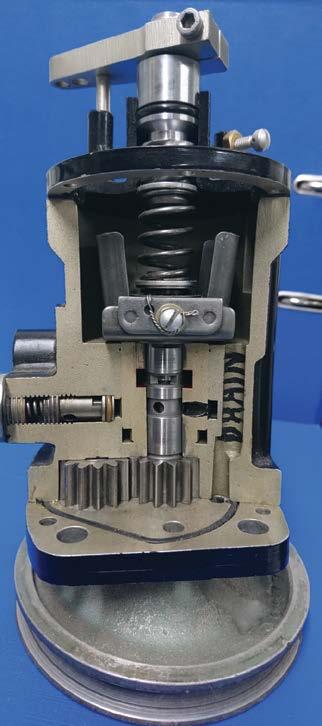






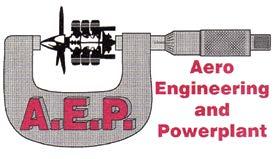


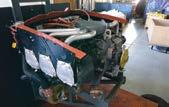


























We elevate the ar t of aviation design to new heights. Our innovative approach blends cutting- edge technology with timeless elegance, transforming aircraf t into personalized sanc tuaries of comfor t and style. From bespoke seating & advanced cabin layouts to exquisite liveries, we craf t ever y detail to ensure your journey is as ex traordinar y as your destination.

Liver y Design
Photorealistic 3D previews
Photography


















• Now certified for TCAS training.
• RNAV and GNSS Certified on all flight models from single engine to turbine.
Tel: 011 701 3862
E-mail: info@aeronav.co.za
Website: www.aeronav.co.za

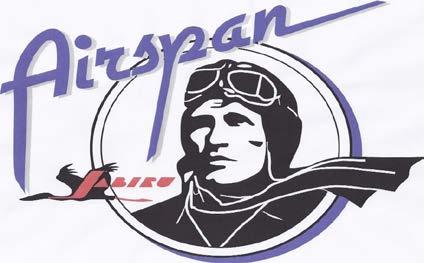
AIRSPAN EXECUTIVE AIRPORT, a dynamic, young, registered airport, just east of Rustenburg, NW. A tarred, lighted 900m runway, helipads, aprons, 1000+ people venue, restaurant, bar, accommodation. Extending the runway (1100m), registering a PPL school, building hangers, storage units, and an AMO. Looking forward to all fly-ins (no landing fees)!
Contact details: Renzia: 082 432 9228 / 083 229 5746, Fanie: 083 651 2254
Email: Airspan.fbf@gmail.com

Brits Flying Club, Founded in 1952, Brits Flying Club is one of South Africa's most respected aviation clubs, producing world-class aviators. Home to Springbok colours, we've nurtured champions. Located at FABS, our 900m asphalt runway (02/20) supports top aviation. Join us in honouring our rich heritage! Telephone: 012 255 0155
E-Mail: info@britsflyingclub.co.za Website: britsflyingclub.co.za

FABB is located central in the Ekurhuleni, close to OR Tambo. It houses various Flight Schools and AMOs, and has a lit 1440m runway. Jet-A1 and Avgas are available.
The clubhouse has a restaurant, lounge, pub, DSTV, outside braai area, pool, kids play area, and ablution facilities for overnight stays.

Fuel on airfield Avgas & Jet A1
FAHG 125.9
Contact – Andre Vorster +27 83 654 2793
Mail: Andre Vorster: andre@poxytech.co.za

NPL/PPL Training Centre - SACAA accredited (SACAA1177ATO) NPL Part 62 and PPL Part 61 ATO in Ladysmith KZN (FALY) and we have been in business since 2009. Avgas sales are also available at FALY.
Contact Larry: +27 83 788 2704

Himeville airfield is the gateway to Underberg and the southern Drakensberg surrounds. Sani Pass, Hiking, camping fishing, MTB biking, running trails, paddling the list of activities is long. Loads of accommodation options available
Co-ordinates: S29"44.9 E029"30.2
Runway: 05/23 900m grass
Frequency: 124.8
Contact:
Jayson van Schalkwyk +27 82 322 5722

Orient Airfield FAOI
S26°02’24” E027°35’42”
Situated 45km WNW of Johannesburg, the airfield features a 1.4km main runway, 36-18, 5100ft ASL. Training is provided in Gliders and TMG’s up to GPL level. The TMG’s are available for cost effective hour building for CPL and PPL Pilots.
Contact: http://mgc.org.za
OWN YOUR SLICE OF SKY AT TEDDERFIELD AIRPARK!
Ditch the rent and land your dreams at our fly-in community! Secure your hangar or stand in a buzzing aviation hub with epic facilities, security, SLING Aircraft, and a like-minded crew of aviators. SPACE IS LIMITED. INVEST NOW! https://tedderfield.co.za/home TedderfieldAirpark.co.za or contact Alan or Nic on +27 83 702 3680 or +27 82 900 4299.
FABB is located central in the Ekurhuleni, close to OR Tambo. It houses various Flight Schools and AMOs, and has a lit 1440m runway. Jet-A1 and Avgas are available.
The clubhouse has a restaurant, lounge, pub, DSTV, outside braai area, pool, kids play area, and ablution facilities for overnight stays.











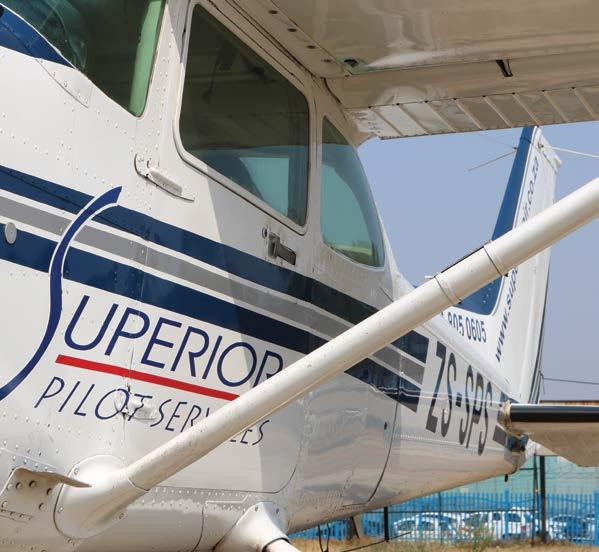
Japanese motorcycle and heavy industry supremo Kawasaki is working on a new piston aviation engine. It says it hopes to have its first four- and six-cylinder inline models type certified as early as 2030.
THE company is designing the models to initially run on traditional combustion fuels, but with the capacity for transitioning to hydrogen and e-fuels depending on customer needs. The engines will offer high power-to-weight ratios and are designed to be compact and low-vibration, drawing from what the company has learned in decades of motorcycle engine development.
According to the company, its 310-hp Ninja H2R motorcycle engine is the highest-performing motorcycle engine. Kawasaki has developed a hydrogen internal combustion engine (ICE) for its world-first hydrogen-powered motorcycle, the Ninja H2 SX, which debuted in July last year.
“When you start thinking about the power-to-weight ratio, it’s going to be a good fit with making the right changes to meet the requirements for the aviation application, which is different from the motorcycle,” Yuichiro “Jamie” Imai,

manager of Kawasaki’s business planning department, said at Aero Friedrichshafen. “But when you think about the fundamentals, the basic design of the engine, our belief is that we carry extensive experience and knowledge to design a good engine.”
“One of the reasons why we started to think about hydrogen in the aviation engine is when people talk about hydrogen aircraft, and even within Kawasaki, where we have a working relationship working on larger commercial hydrogen aircraft, I think the people see all those images of a huge fuel tank,” Imai said. But the piston engine has a fuel consumption to output advantage, he said.
In May 2023, Kawasaki and other automotive brands including Yamaha, Suzuki, Honda, and Toyota formed a research body because, with hydrogen engine technology still in its infancy, the companies decided that collaboration would be better than competition.

info@taxfinaccounting.co.za
Eltimon: +27 65 705 7274
Bella: +27 79 570 3757
www.taxfinaccounting.co.za


208 Aviation
Ben Esterhuizen +27 83 744 3412 / 83 820 1513 ben@208aviation.co.za info@208aviation.co.za www.208aviation.com
A1A Flight Examiner (Loutzavia)
Jannie Loutzis 012 567 6775 / 082 416 4069 jannie@loutzavia.co.za www.loutzavia.co.za
AES (Cape Town)
Erwin Erasmus 082 494 3722 erwin@aeroelectrical.co.za www.aeroelectrical.co.za
AES (Johannesburg)
Danie van Wyk 011 701 3200 office@aeroelectrical.co.za www.aeroelectrical.co.za
Aerocolour cc
Alfred Maraun 082 775 9720 www.aeroeng@iafrica.com
Aero Engineering & PowerPlant
Andre Labuschagne 012 543 0948 www.aerocolour@telkomsa.net
Aerokits
Jean Crous 072 6716 240 aerokits99@gmail.com
Aeronav Academy Donald O’Connor 011 701 3862 info@aeronav.co.za www.aeronav.co.za
Aeronautical Aviation Clinton Carroll 011 659 1033 / 083 459 6279 clinton@aeronautical.co.za www.aeronautical.co.za
Aerospace Electroplating
Oliver Trollope 011 827 7535 petasus@mweb.co.za
Aerotel Martin den Dunnen 087 6556 737 reservations@aerotel.co.za www.aerotel.co.za
Aerotric
Richard Small 083 488 4535 aerotric@aol.com
Aviation Rebuilders cc Lyn Jones 011 827 2491 / 082 872 4117 lyn@aviationrebuilders.com www.aviationrebuilders.com
AVIC International Flight Academy (AIFA) Theo Erasmus 082 776 8883 rassie@aifa.co.za
Air 2000 (Pty) Ltd
Anne Gaines-Burrill 011 659 2449 - AH 082 770 2480 Fax 086 460 5501 air2000@global.co.za www.hunterssupport.com
Aircraft Finance Corporation & Leasing
Jaco Pietersen +27 [0]82 672 2262 jaco@airfincorp.co.za
Jason Seymour +27 [0]82 326 0147 jason@airfincorp.co.za www.airfincorp.co.za
Aircraft General Spares
Eric or Hayley 084 587 6414 or 067 154 2147 eric@acgs.co.za or hayley@acgs.co.za www.acgs.co.za
Aircraft Maintenance International Pine Pienaar 083 305 0605 gm@aminternational.co.za
Aircraft Maintenance International Wonderboom Thomas Nel 082 444 7996 admin@aminternational.co.za
Air Line Pilots’ Association
Sonia Ferreira 011 394 5310 alpagm@iafrica.com www.alpa.co.za
Airshift Aircraft Sales
Eugene du Plessis 082 800 3094 eugene@airshift.co.za www.airshift.co.za
Alclad Sheetmetal Services
Ed Knibbs 083 251 4601 ed@alclad.co.za www.alclad.co.za
Algoa Flying Club
Sharon Mugridge 041 581 3274 info@algoafc.co.za www.algoafc.co.za
Alpi Aviation SA
Dale De Klerk 082 556 3592 dale@alpiaviation.co.za www.alpiaviation.co.za
Apco (Ptyd) Ltd Tony/Henk + 27 12 543 0775 apcosupport@mweb.co.za www.apcosa.co.za
Ardent Aviation Consultants
Yolanda Vermeulen 082 784 0510 yolanda@ardentaviation.co.za www.ardentaviation.co.za
Ascend Aviation Marlo Kruyswijk 079 511 0080 marlo@ascendaviation.co.za www.ascendaviation.co.za
Atlas Aviation Lubricants
Steve Cloete 011 917 4220 Fax: 011 917 2100 sales.aviation@atlasoil.co.za www.atlasaviation.co.za
AVDEX (Pty) Ltd
Tania Botes 011 954 15364 info@avdex.co.za www.avdex.co.za
Aviatech Flight Academy
Nico Smith 082 303 1124 viatechfakr@gmail.com www.aviatech.co.za
Aviation Direct
Andrea Antel 011 465 2669 info@aviationdirect.co.za www.aviationdirect.co.za
Avtech
Riekert Stroh 082 749 9256 avtech1208@gmail.com
BAC Aviation AMO 115 Micky Joss 035 797 3610 monicad@bacmaintenance.co.za
Blackhawk Africa Cisca de Lange 083 514 8532 cisca@blackhawk.aero www.blackhawk.aero
Blue Chip Flight School
Henk Kraaij 012 543 3050 bluechip@bluechip-avia.co.za www.bluechipflightschool.co.za
Border Aviation Club & Flight School
Liz Gous 043 736 6181 admin@borderaviation.co.za www.borderaviation.co.za
Bona Bona Game Lodge
MJ Ernst 082 075 3541 mj@bonabona.co.za www.bonabona.co.za
Breytech Aviation cc 012 567 3139 Willie Breytenbach admin@breytech.co.za
Celeste Sani Pak & Inflight Products
Steve Harris 011 452 2456 admin@chemline.co.za www.chemline.co.za
Cape Town Flying Club Beverley Combrink 021 934 0257 / 082 821 9013 info@capetownflyingclub.co.za www.capetownflyingclub.co.za
Cape Town Flight Training Centre
Frans 021 976 7053 admin@cape-town-flying.co.za www.cape-town-flying.co.za
Capital Air
Tanya Vinagre 011 827 0335 / 083 928 7265 tanya@capitalairsa.com www.capitalairsa.com
Century Avionics cc Carin van Zyl 011 701 3244 sales@centuryavionics.co.za www.centuryavionics.co.za
Chemetall
Wayne Claassens 011 914 2500 wayne.claassens@basf.com www.chemetall.com
Chem-Line Aviation & Celeste Products
Steve Harris 011 452 2456 sales@chemline.co.za www.chemline.co.za
Clifton Electronics cc CJ Clifton / Irene Clifton 079 568 7205 / 082 926 8482 clive.iclifton@gmail.com
Comair Flight Services (Pty) Ltd Reception +27 11 540 7640/FAX: +27 11 252 9334 hello@flycfs.com www.flycfs.com
Corporate-Aviators/Affordable Jet Sales Mike Helm 082 442 6239 corporate-aviators@iafrica.com www.corporate-aviators.com
CSA Aviation – Cirrus South Africa Alex Smith 011 701 3835 alexs@cirrussa.co.za www.cirrussa.co.za
C. W. Price & Co
Kelvin L. Price 011 805 4720 cwp@cwprice.co.za www.cwprice.co.za
Dart Aeronautical Pieter Viljoen 011 827 0371 pieterviljoen@dartaero.co.za www.dartaero.co.za
Dart Aircraft Electrical Mathew Joubert 011 827 0371 Dartaircraftelectrical@gmail.com www.dartaero.co.za
Diepkloof Aircraft Maintenance cc Nick Kleinhans 083 454 6366 diepkloofamo@gmail.com
DJA Aviation Insurance 011 463 5550 0800Flying mail@dja-aviation.co.za www.dja-aviation.co.za
Dynamic Propellers Andries Visser 011 824 5057 082 445 4496 andries@dynamicpropeller.co.za www.dynamicpropellers.co.za
Eagle Flight Academy
Mr D. J. Lubbe 082 557 6429 training@eagleflight.co.za www.eagleflight.co.za
Execujet Africa 011 516 2300 enquiries@execujet.co.za www.execujet.com
Federal Air Rachel Muir 011 395 9000 shuttle@fedair.com www.fedair.com
Ferry Flights int.inc. Michael (Mick) Schittenhelm 082 442 6239 ferryflights@ferry-flights.com www.ferry-flights.com
F Gomes Upholsters Carla de Lima 083 602 5658 delimaCarla92@gmail.com
Fireblade Aviation 010 595 3920 info@firebladeaviation.com www.firebladeaviation.com
Flight Training College Cornell Morton 044 876 9055 ftc@flighttrainning.co.za www.flighttraining.co.za
Flight Training Services Amanda Pearce 011 805 9015/6 amanda@fts.co.za www.fts.co.za
Fly Jetstream Aviation Henk Kraaij 083 279 7853 charter@flyjetstream.co.za www.flyjetstream.co.za
Flying Unlimited Flight School (Pty) Ltd Riaan Struwig 082 653 7504 / 086 770 8376 riaan@ppg.co.za www.ppg.co.za
Flyonics (Pty) Ltd
Michael Karaolis 010 109 9405 michael@flyonics.co.za www.flyonics.co.za
Gemair Andries Venter 011 701 2653 / 082 905 5760 andries@gemair.co.za
GIB Aviation Insurance Brokers Richard Turner 011 483 1212 aviation@gib.co.za www.gib.co.za
Guardian Air 011 701 3011 082 521 2394 ops@guardianair.co.za www.guardianair.co.za
Heli-Afrique cc Tino Conceicao 083 458 2172 tino.conceicao@heli-afrique.co.za
Henley Air
Andre Coetzee 011 827 5503 andre@henleyair.co.za www.henleyair.co.za
Hover Dynamics
Phillip Cope 074 231 2964 info@hover.co.za www.hover.co.za
Indigo Helicopters
Gerhard Kleynhans 082 927 4031 / 086 528 4234 veroeschka@indigohelicopters.co.za www.indigohelicopters.co.za
IndigoSat South Africa - Aircraft Tracking
Gareth Willers 08600 22 121 sales@indigosat.co.za www.indigosat.co.za
International Flight Clearances
Steve Wright 076 983 1089 (24 Hrs) flightops@flyifc.co.za www.flyifc.co.za
Investment Aircraft
Quinton Warne 082 806 5193 aviation@lantic.net www.investmentaircraft.com
Jabiru Aircraft
Len Alford 044 876 9991 / 044 876 9993 info@jabiru.co.za www.jabiru.co.za
Jim Davis Books
Jim Davis 072 188 6484 jim@border.co.za www.jimdavis.co.za
Joc Air T/A The Propeller Shop
Aiden O’Mahony 011 701 3114 jocprop@iafrica.com
Johannesburg Flying Academy
Alan Stewart 083 702 3680 info@jhbflying.co.za www.jhbflying.co.za
Kishugu Aviation +27 13 741 6400 comms@kishugu.com www.kishugu.com/kishugu-aviation
Khubenker Energy (Pty) Ltd T/A Benveroy
Vernon Bartlett 086 484 4296 vernon@khubenker.co.za www.khubenker.co.za
Kit Planes for Africa
Stefan Coetzee 013 793 7013 info@saplanes.co.za www.saplanes.co.za
Kzn Aviation (Pty) Ltd
Melanie Jordaan 031 564 6215 mel@kznaviation.co.za www.kznaviation.co.za
Lanseria Aircraft Interiors
Francois Denton 011 659 1962 / 076 810 9751 francois@aircraftcompletions.co.za
Lanseria Flight Centre
Ian Dyson Tel: +27 11 312 5166, F: +27 11 312 5166 ian@flylfc.com www.flylfc.com
Lanseria International Airport
Mike Christoph 011 367 0300 mikec@lanseria.co.za www.lanseria.co.za
Leading Edge Aviation cc
Peter Jackson
Tel 013 741 3654 Fax 013 741 1303 office@leaviation.co.za www.leadingedgeaviation.co.za
Legend Sky 083 860 5225 / 086 600 7285 info@legendssky.co.za www.legendsky.co.za
Litson & Associates (Pty) Ltd
OGP/BARS Auditing & Advisory Services & Aviation Safety Training
Email: enquiries@litson.co.zaPhone: 27 (0) 8517187 www.litson.co.za
Litson & Associates Risk Management Services (Pty) Ltd
eSMS-S™/ eTENDER/ e-REPORT / Aviation Software Systems
Email: enquiries@litson.co.zaPhone: 27 (0) 8517187 www.litson.co.za
Loutzavia Aircraft Sales
Henry Miles 082 966 0911 henry@loutzavia.co.za www.loutzavia.co.za
Loutzavia Flight Training
Gerhardt Botha 012 567 6775 ops@loutzavia.co.za www.loutzavia.co.za
Loutzavia-Pilots and Planes
Maria Loutzis 012 567 6775 maria@loutzavia.co.za www.pilotsnplanes.co.za
Loutzavia Rand Frans Pretorius 011 824 3804 rand@loutzavia.co.za www@loutzavia.co.za
Lowveld Aero Club
Pugs Steyn 013 741 3636 Flynow@lac.co.za
Maverick Air Charters
Lourens Human 082 570 2743 ops@maverickair.co.za www.maverickair.co.za
MCC Aviation Pty Ltd
Claude Oberholzer 011 701 2332 info@flymcc.co.za www.flymcc.co.za
Mistral Aviation Services
Peter de Beer 083 208 7249 peter@mistral.co.za
MH Aviation Services (Pty) Ltd
Marc Pienaar 011 609 0123 / 082 940 5437 customerrelations@mhaviation.co.za www.mhaviation.co.za
M and N Acoustic Services cc Martin de Beer 012 689 2007/8 calservice@mweb.co.za
Metropolitan Aviation (Pty) Ltd
Gert Mouton 082 458 3736 herenbus@gmail.com
Money Aviation Angus Money 083 263 2934 angus@moneyaviation.co.za www.moneyaviation.co.za
Mont Blanc Financial Services
Devon Ford 0800 467 873 info@mbfs.co.za www.mbfs.co.za
MS Aviation Gary 082 563 9639 gary.templeton@msaviation.co.za
North East Avionics
Keith Robertson +27 13 741 2986 keith@northeastavionics.co.za deborah@northeastavionics.co.za www.northeastavionics.co.za
Orsmond Aviation 058 303 5261 info@orsmondaviation.co.za www.orsmondaviation.co.za
Owenair (Pty) Ltd
Clive Skinner 082 923 9580 clive.skinner@owenair.co.za www.owenwair.co.za
Par-Avion Exclusive Catering
Jakkie Vorster 011 701 2600 accounts@par-avion.co.za www.par-avion.co.za
PFERD-South Africa (Pty) Ltd Hannes Nortman 011 230 4000 hannes.nortman@pferd.co.za www.pferd.com
Plane Maintenance Facility
Johan 083 300 3619 pmf@myconnection.co.za
Powered Flight Charters
Johanita Jacobs Tel 012 007 0244/Fax 0866 66 2077 info@poweredflight.co.za www.poweredflight.co.za
Powered Flight Training Centre
Johanita Jacobs Tel 012 007 0244/Fax 0866 66 2077 info@poweredflight.co.za www.poweredflight.co.za
Precision Aviation Services
Marnix Hulleman 012 543 0371 marnix@pasaviation.co.za www.pasaviation.co.za
Propeller Centre
Theuns du Toit +27 12 567 1689 / +27 71 362 5152 theuns@propcentre.co.za www.propcentre.com
Rainbow SkyReach (Pty) Ltd
Mike Gill 011 817 2298 Mike@fly-skyreach.com www.fly-skyreach.com
Rand Airport
Kevin van Zyl Kevin@horizonrisk.co.za +27 76 801 5639 www.randairport.co.za
Dr Rudi Britz Aviation Medical Clinic Megan 066 177 7194 rudiavmed@gmail.com Wonderboom Airport
SAA Technical (SOC) Ltd SAAT Marketing 011 978 9993 satmarketing@flysaa.com www.flysaa.com/technical
SABRE Aircraft
Richard Stubbs 083 655 0355 richardstubbs@mweb.co.za www.aircraftafrica.co.za
Savannah Helicopters
De Jager082 444 1138 / 044 873 3288 dejager@savannahhelicopters.co.za www.savannahhelicopters.co.za
Scenic Air
Christa van Wyk +264 612 492 68 windhoek@scenic-air.com www.scenic-air.com
Sheltam Aviation Durban
Susan Ryan 083 505 4882 susanryan@sheltam.com www.sheltamaviation.com
Sheltam Aviation PE Brendan Booker 082 497 6565 brendanb@sheltam.com www.sheltamaviation.com
Signature Flight Support Cape Town Alan Olivier 021 934 0350 cpt@signatureflight.co.za www.signatureaviation.com/locations/CPT
Signco (Pty Ltd)
Archie Kemp Tel 011 452 6857 Fax 086 504 5239 info@signco.zo.za www.signco.co.za
Skytrim
Rico Kruger +27 11 827 6638 rico@skytrim.co.za www.skytrim.co.za
SleepOver Michael Richardson 010 110 9900 michael.richardson@sleepover-za.com www.sleepover-za.com
Sling Aircraft Kim Bell-Cross 011 948 9898 sales@airplanefactory.co.za www.airplanefactory.co.za
Solenta Aviation (Pty Ltd) Paul Hurst 011 707 4000 info@solenta.com www.solenta.com
Southern Energy Company (Pty) Ltd
Elke Bertram +264 8114 29958 johnnym@sec.com.na www.sec.com.na
Southern Rotorcraft cc Mr Reg Denysschen Tel no: 021 935 0980 execheli@iafrica.com www.rotors-r-us.com
Starlite Aero Sales
Klara Fouché +27 83 324 8530 / +27 31 571 6600 klaraf@starliteaviation.com www.starliteaviation.com
Starlite Aviation Operations
Trisha Andhee +27 82 660 3018/ +27 31 571 6600 trishaa@starliteaviation.com www.starliteaviation.com
Starlite Aviation Training Academy
Durban: +27 31 571 6600 Mossel Bay: +27 44 692 0006 train@starliteaviation.com www.starliteaviation.com
Status Aviation (Pty) Ltd
Richard Donian 074 587 5978 / 086 673 5266 info@statusaviation.co.za www.statusaviation.co.za
Superior Pilot Services
Liana Jansen van Rensburg0118050605/2247 info@superiorair.co.za www.superiorair.co.za
Swift Flite
Linda Naidoo Tel 011 701 3298 Fax 011 701 3297 info@swiftflite.com / linda@swiftflite.com www.swiftflite.co.za
The Aviation Shop Karel Zaayman 010 020 1618 info@aviationshop.co.za www.aviationshop.co.za
The Copter Shop Bill Olmsted 082 454 8555 execheli@iafrica.com www.execheli.wixsite.com/the-copter-shop-sa
The Pilot Shop Helen Bosland 082 556 3729 helen@pilotshop.co.za www.pilotshop.co.za
Titan Helicopter Group 044 878 0453 info@titanhelicopters.com www.titanhelicopters.com
Top Flight Academy Nico Smith 082 303 1124 topflightklerksdorp@gmail.com
Turbo Prop Service Centre 011 701 3210 info@tpscsa.co.za www.tpscsa.co.za
Ultimax Aviation (Pty) Ltd Aristide Loumouamou +27 72 878 8786 aristide@ultimax-aviation.com www.ultimax-aviation.com
United Charter cc Jonathan Wolpe 083 270 8886 jonathan.wolpe@unitedcharter.co.za www.unitedcharter.co.za
United Flight Support Clinton Moodley/Jonathan Wolpe 076 813 7754 / 011 788 0813 ops@unitedflightsupported.com www.unitedflightsupport.com
Velocity Aviation Collin Pearson 011 659 2306 / 011 659 2334 collin@velocityaviation.co.za www.velocityaviation.co.za
Villa San Giovanni Luca Maiorana 012 111 8888 info@vsg.co.za www.vsg.co.za
Vortx Aviation Bredell Roux 072 480 0359 info@vortx.co.za www.vortxaviation.com
Wanafly Adrian Barry 082 493 9101 adrian@wanafly.net www.wanafly.co.za
Windhoek Flight Training Centre
Thinus Dreyer 0026 40 811284 180 pilots@flywftc.com www.flywftc.com
Wings n Things Colin Blanchard 011 701 3209 wendy@wingsnthings.co.za www.wingsnthings.co.za
Witbank Flight School Andre De Villiers 083 604 1718 andredv@lantic.net www.waaflyingclub.co.za
Wonderboom Airport
Peet van Rensburg 012 567 1188/9 peet@wonderboomairport.co.za www.wonderboomairport.co.za
Zandspruit Bush & Aero Estate
Martin Den Dunnen 082 449 8895 martin@zandspruit.co.za www.zandspruit.co.za
Zebula Golf Estate & SPA Reservations 014 734 7700 reception@zebula.co.za www.zebula.co.za
